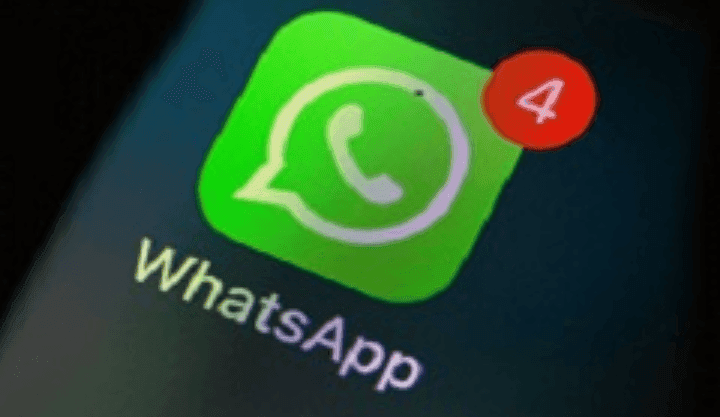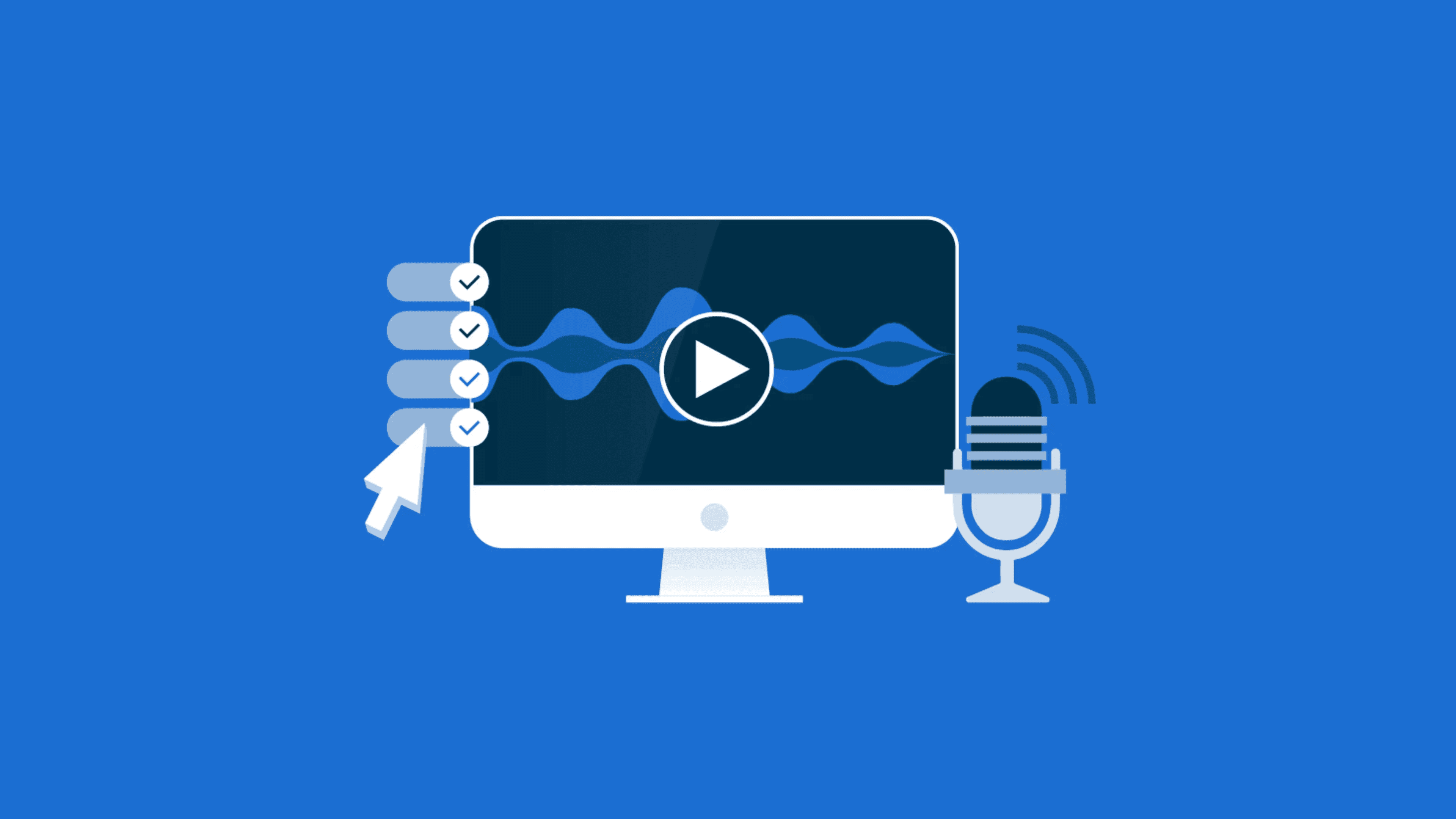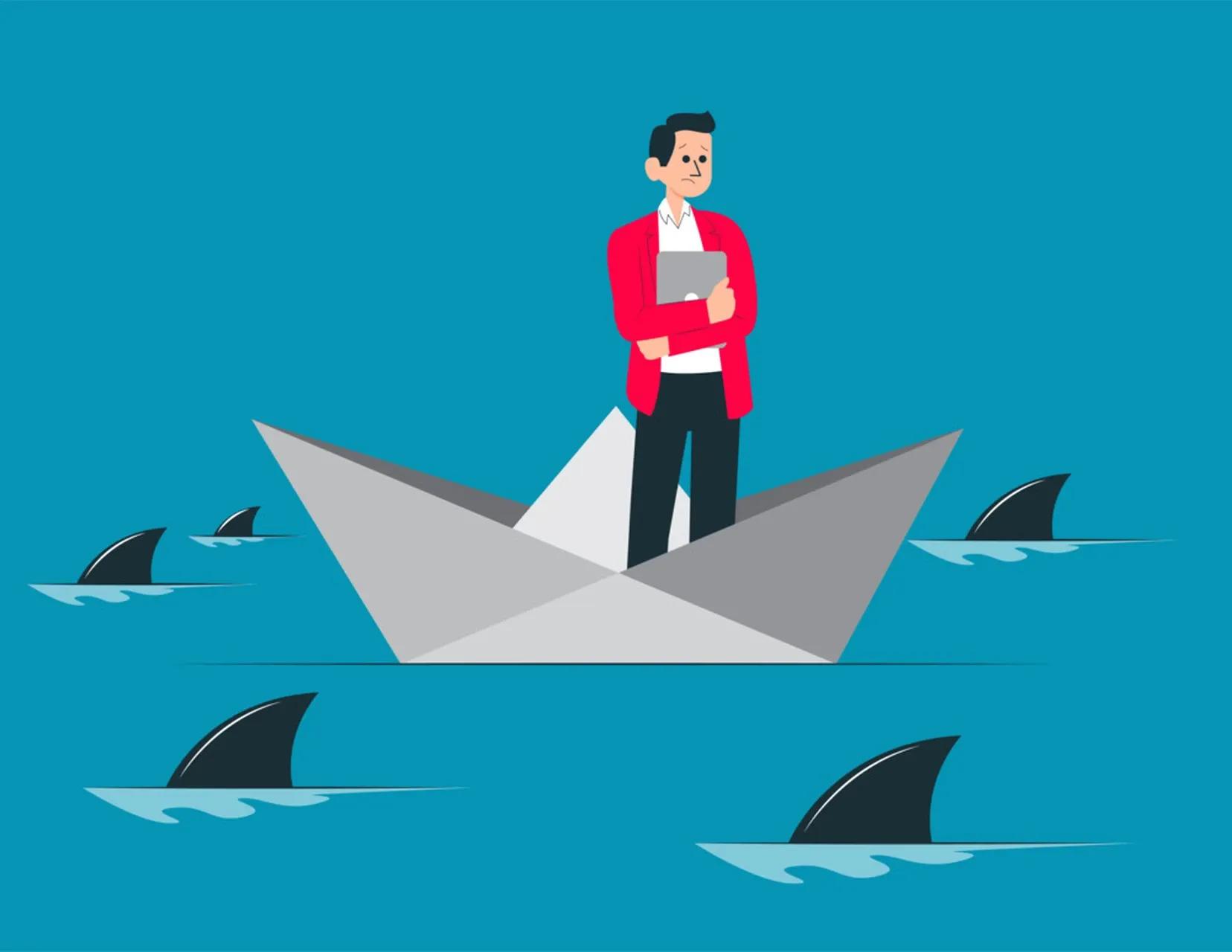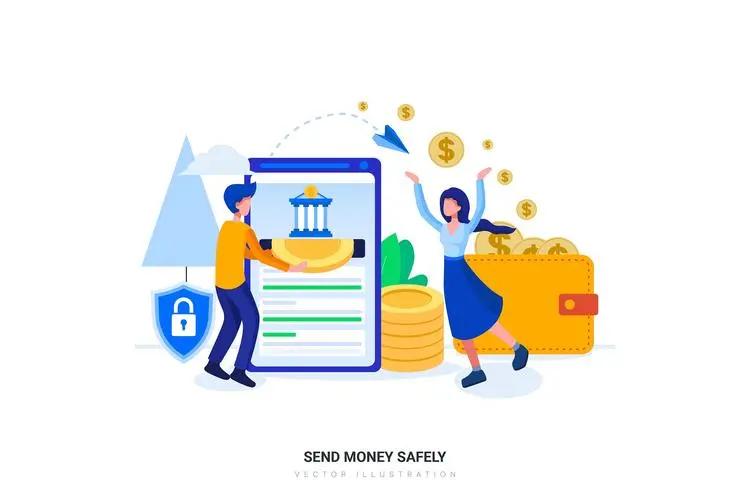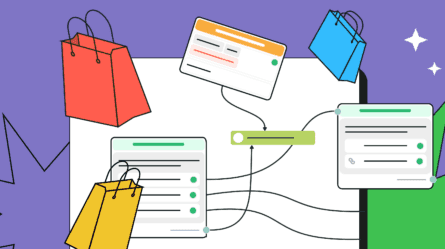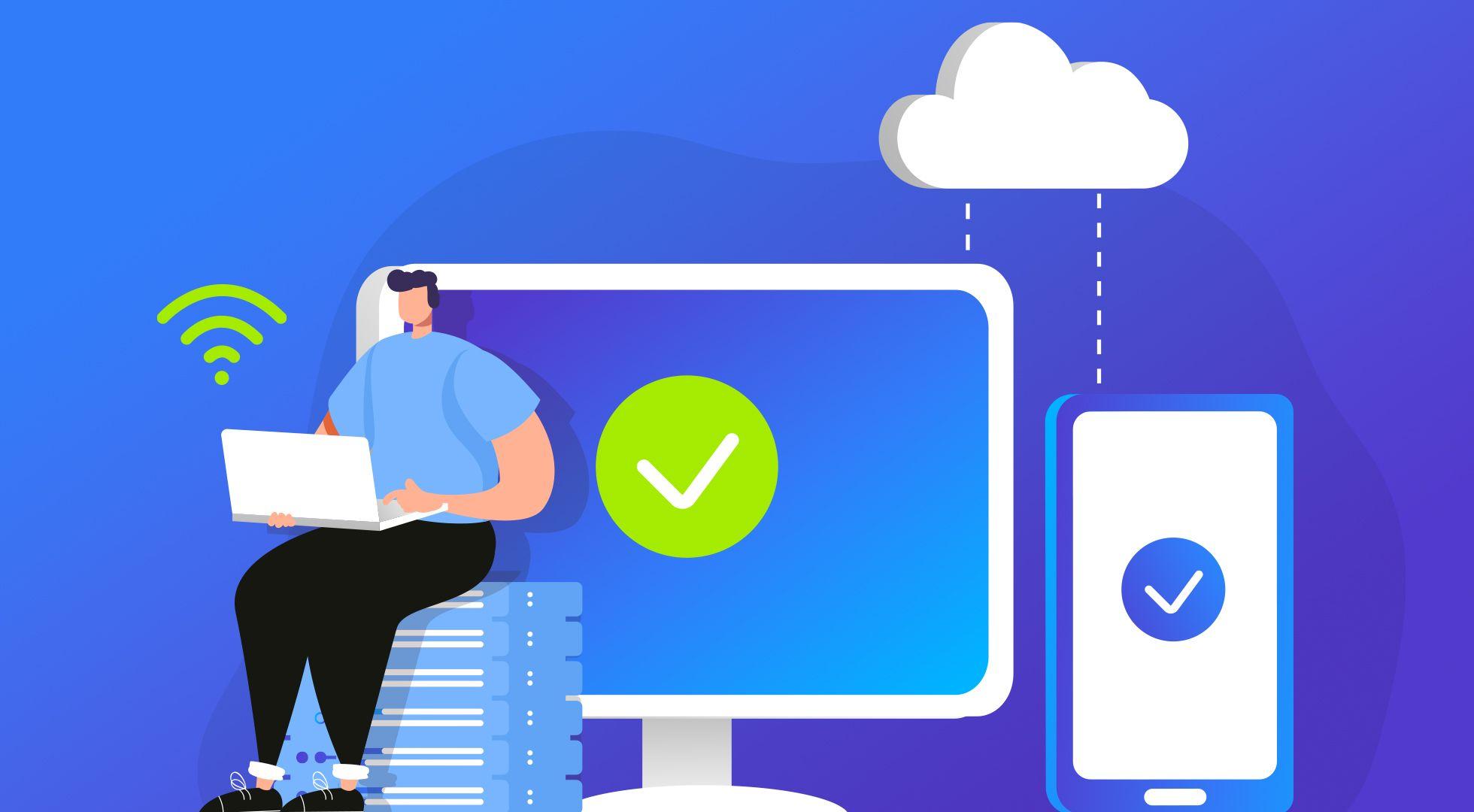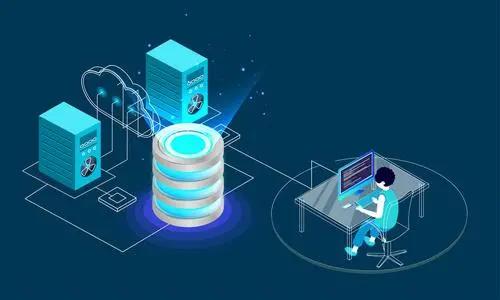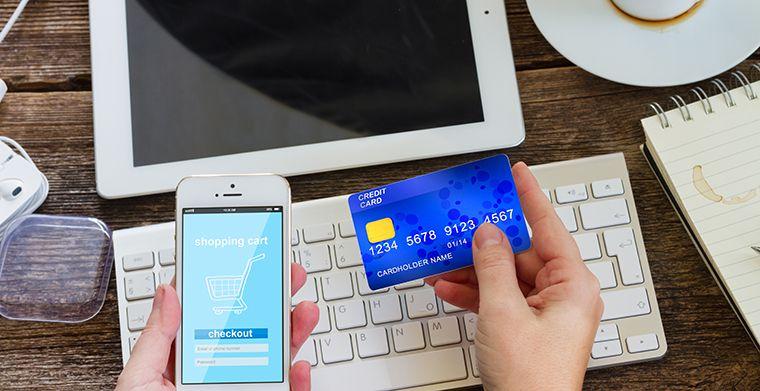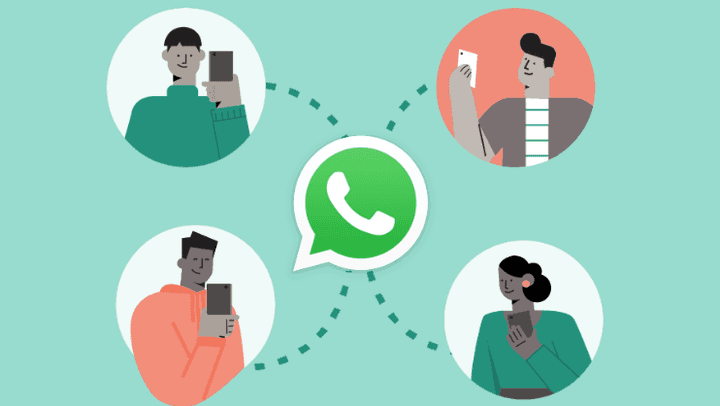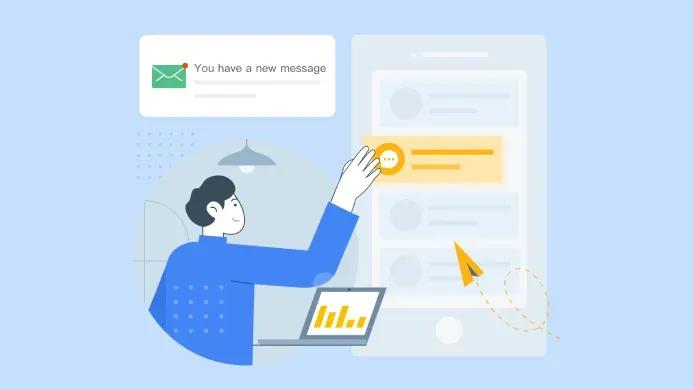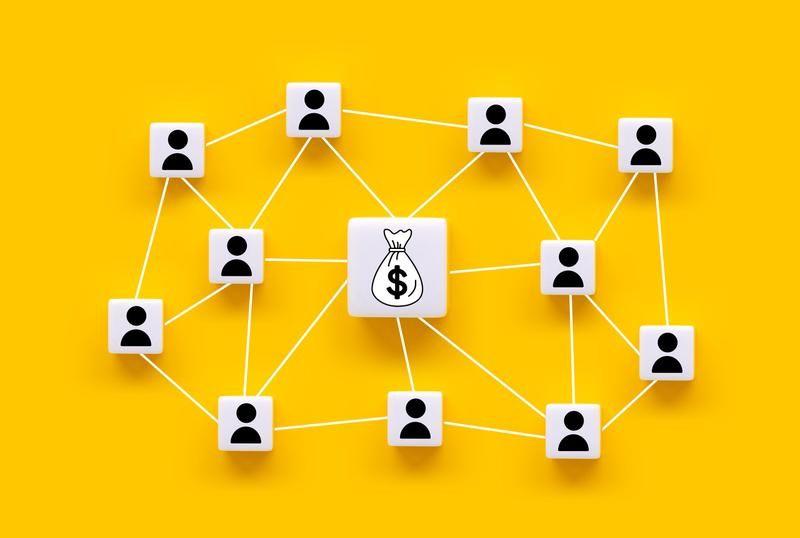应用程序
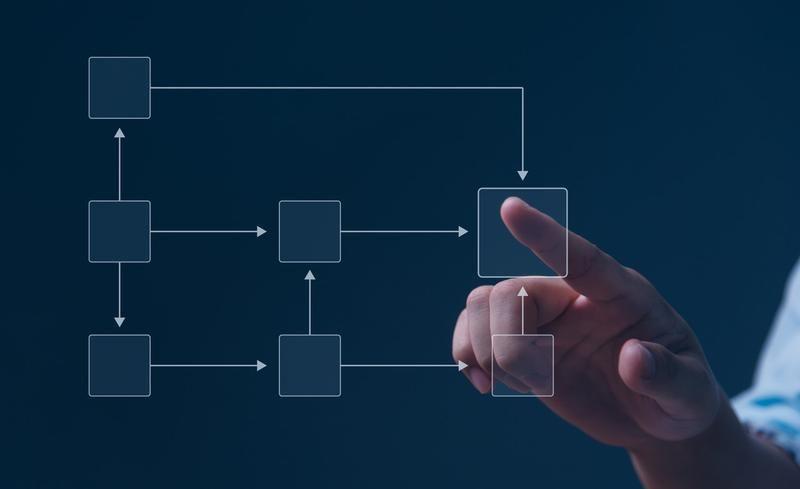
Mobile landing page
A mobile landing page is a web page built for mobile browsers that opens when a user clicks on a search result or an ad via smartphone. This page should have one goal, one call to action, simple navigation, and design. It has a conventional goal and makes a user perform a desirable action.
In this video, Caleb Smith, marketer at LIKE.TG, explains how to create a mobile landing page with LIKE.TG.
Why is it important to create a mobile landing page?
Creating a mobile version of your landing page is not just a useful addition, it is a necessity.According to Statista, there are 3.5 billion smartphone users worldwide in 2020 and this number is still rising. 51% of internet users purchase products online via smartphones. Meanwhile, the number of desktop users is steadily decreasing. However, conversions on mobile devices are still lower than on desktop.
We’ve all had bad experiences browsing the web on our mobile devices: pages that are difficult to navigate, long loading times, and too much text that makes it very difficult to understand what you are looking at. This happens because only 50% of landing pages are optimized for mobile devices.
To prevent your customers from having such an experience with your products and services it is best to design a landing page so that it has an easy-to-follow copy, a simple design, fast load time, and is easy to navigate using a smartphone.
Now let’s take a look at some things you need to know when creating a high converting landing page for smartphones.
How to Create a High Converting Mobile Landing Page
Choose an intuitive landing page builder
Remember Mobile-First Design
Use a Single-Column Layout
Be Concise in Your Copy
Optimize Forms for Mobile Devices
Add a CTA Button
Consider Load Time
According to Sweor, it takes about 50 milliseconds for users to decide whether they like a website or not. That is why sites should be optimized to keep mobile users on the page. So, we’ll walk you through several steps to create a high-converting mobile landing page.
Choose an Intuitive Landing Page Builder
LIKE.TG provides an easy-to-use drag and drop landing page builder. It enables you to create a landing page, online store, or link page for your social media bio. All the pages created with our service are responsive by default. You can use a pre-made template or create a unique page from scratch for free. Add images and videos, a subscription widget to convert site visitors into subscribers, links to your social media accounts and blog, payment options. Track your page performance with the help of reports and optimize it for a search engine.
To create a landing page, arrange your page structure, drag the elements you need and customize their design using a toolbar.
Follow this step-by-step guide.
Remember Mobile-First Design
When you design your site so that users can access it from a smartphone, you guarantee that your customer experience will be good on any device. There are several things to consider. Firstly, make sure that your site visitors can see everything clearly from a small smartphone screen. Secondly, provide your customers with all the necessary information they might look for. Thirdly, make sure that your website is easy to navigate on a smartphone. Finally, don’t burden your visitors with excessive elements such as ads or intrusive pop-ups.
Use a Single-Column Layout
Smartphones don’t have room for several columns. They can make navigation and scrolling feel cumbersome and unnatural. Multiple columns that are used for a desktop version of the site aren’t a good fit for mobile devices as users only have about 3x5 inches to navigate around your page.
A Single-column layout is easy to set up and suits mobile screens the best. It is a series of boxes stacked one on top of the other. This layout includes a header, field for content, footer, and a horizontal navigation menu.
Now let’s take a look at the official Alaska state website. The desktop and mobile version of the website looks the same. So you can imagine how difficult it is to navigate from a smartphone.
To see the difference, let’s analyze Alabama’s landing page for smartphones. The single-column layout makes it much easier to use compared to the previous site.
Be Concise in Your Copy
When creating a mobile version, think about how users will engage with your content. Here are several points to consider:
use a headline that is specific and short;
make sure that your headline contains a unique value proposition;
add a subheading, if necessary;
ensure that your written copy is clear, concise, and to the point;
use bullet points to highlight the key points and draw customer’s attention;
ensure that your sentences and paragraphs are short not to overwhelm a user with too much information.
Here is an excellent example of Mouseflow’s mobile landing page. This site uses a clear headline that conveys the main message of this service, short sentences to describe the benefits of Mouseflow, and an easy-to-tap CTA button that offers a freebie.
Optimize Forms for Mobile Devices
If you want to collect information about customers who use smartphones to visit your website, it is critical to optimize forms for mobile devices. You need to:
write a headline that makes a user click;
ensure that the form includes the minimum required fields (name, address, email, phone number) to achieve your goals;
avoid using images as they take up a lot of space;
make sure that the form loads fast;
create an easy-to-tap ‘Submit’ button and keep in mind that 44x44 pixels should be the minimum size you use;
implement drop-down menus and auto-selected answers to save customers’ time;
specify the required fields;
use vertical alignment for the fields of your form to fit the screen of a mobile device.
Here is a great example of an optimized form from Learn Jazz Standards.
Add a CTA Button
A call to action button is an essential element for helping users decide to take an action. The minimum size of this button for a mobile device is 44 x 44 pixels. According to the Gutenberg Principle, users start scanning the page at the top left corner and finish at the bottom right. That is why the best place to add a CTA button is at the end of the visitors’ scanning path when they get acquainted with your content. This button should contrast with the background to be visible and big enough for a user to click.
Here is an example of a Wix’s CTA button that is easy to click and is placed after the copy.
Consider Load Time
Speed is very important for smartphone users. You risk losing your audience just because your mobile landing page user interface is slow. According to Think with Google, as page load time goes from one to three seconds, the probability of bounce increases by 32%.
If you want to check the speed of your landing page, you can go through a Google Speed Test to receive a report on your page’s performance and some suggestions to optimize the site. This tool indicates things that are slowing down your site. Remove anything that you don’t need from this list. Here are the main steps you need to follow to increase your mobile landing page speed.
Reduce your content. The fastest way to make your page load faster is to remove the unnecessary elements. Take into account that visual content weights a lot. Moreover, images take up 20% of web page weight and each creates an HTTP request. These requests go from the user’s browser to form the elements of your landing page. As a result, the speed of your site slows down.
Optimize images. To increase the load time of your page, you should make sure that your images are at least under 800KB and consider the format of images on your page. Compress visuals using special tools. However, remember that when you use JPEG, you can get lower visual fidelity but a smaller file after compression. At the same time, PNG won’t change visually but will be larger in size after compression.
Transfer videos to a third-party platform. If you have videos on your mobile landing page, they can slow down the speed of your page. That is why you should give a thought to moving them to platforms like YouTube, Vimeo, or Wistia to help your page load faster.
Examples of Mobile Landing Pages
Every brand should have a good landing page for mobile devices as it takes milliseconds for a user to decide whether or not to make a purchase. If customers like your mobile landing page, they will engage with your store and finally make purchases.
Here are some excellent landing pages for smartphones so that you can get an idea of how to create a good page for your brand as well.
Mahabis Slippers
Mahabis provides a wide range of slippers ‘designed for comfort and made for adventure.’ You can see their mobile landing page below. The first thing to note is that the brand relies heavily on visuals and it is very striking. There is no doubt that Mahabis passed the shopper’s test for grabbing attention within 50 milliseconds.
Here is an example of a page where everything is clear and visible. When users open Mahabis’ site from a smartphone, they find out about free shipping without scrolling down. Also, customers can select a currency, go to their cart, or start shopping immediately by clicking the ‘Shop Now’ button.
Fronks
Here is an example of a brand that offers organic nut milk and provides customers with delivery. You will appreciate its landing page that contains the information necessary for buyers and is minimalistic in design. Also, Fronks’ landing page has a short and clear header explaining what they offer.
Jack Wolfskin
This brand of outdoor wear and equipment is known worldwide and you can learn a lot from its mobile landing page. When opening the site, the first thing you pay attention to are visuals that demonstrate products for hiking, trekking, mountain sports, winter sports, and everyday clothes.
To be concise and clear, Jack Wolfskin’s landing page includes words to convey the key value proposition, whitespace to give room for customers’ eyes, and a call-to-action button that is easy-to-tap.
Ace Hardware
Ace is the world's largest hardware retail cooperative that has a lot of customers. That is why it is essential to provide their customers with the opportunity to buy online, especially from their smartphones.
Here you can see an example of Ace Hardware’s mobile website. If users open this page, they will find out how to shop at their local Ace, free assembly and delivery for Ace Rewards Members. A customer can also go to their cart, or shop right away by clicking the ‘Shop Now’ button.
Monki
Monki is a brand that offers stylish clothes at competitive prices, aiming to be kind to the world. This company not only has great clothing but also a great mobile website.
After you open Monki’s landing page, you can directly go to your cart, or shop right away. As you can see, Monki uses white space and short phrases not to overwhelm their customers.
6 Mobile Landing Page Best Practices
Implement Click-to-Call
Set Sticky Navigation
Use High Contrast Colors
Limit the Number of Visuals
Reduce Taps
Consider Using White Space
Let’s get into these best practices to design a mobile landing page that attracts customers and allows you to increase conversions.
Implement Click-to-Call
If some data about your products or services isn’t easily accessible for a user of your mobile landing page, you should provide your contact information. To this end, you can use a click-to-call button. Place it so that a button is visible for your customers.
Often, mobile users want to receive information right away. If they can’t find it on your mobile landing page, they can try to reach you by using the call-to-contact button.
Here is an example from Dress Up. A user can click this button to send a message to the brand.
Set Sticky Navigation
Sticky navigation is a fixed navigation menu that remains visible on a mobile landing page even when a visitor scrolls down. It helps simplify the process of browsing by providing menu access that is always visible. They don’t only ensure that customers don’t get lost but also build brand recognition by maintaining a logo always visible to visitors. Data shows that sticky menus are 22% faster to navigate which is crucial for mobile pages.
Here is an example of sticky navigation on Novotel Hotels website. The menu remains even when a user scrolls down.
Limit the number of visuals
Informative and interesting images play an important role in attracting customers. That is why it is critical to use them for a mobile landing page. However, you should be careful with them not to overload the design with too many images.
Excessive visuals can cause several problems for your visitors, they:
weigh a lot and take a long time to load;
make mobile users feel overwhelmed;
make your mobile landing page feel cluttered.
Here is an example from HubSpot, that demonstrates that a page shouldn’t always contain images to be visually appealing.
Reduce taps
If mobile users are looking for a particular type of product, for sure they want to narrow the search to find a product as soon as possible. Your responsibility here is to facilitate the process and provide a narrow search. Create a mobile landing page so that a shopper doesn't have to make many taps.
Polaroid offers visitors to see the best selling gifts. This landing page also has sections for different types of products.
Consider Using White Space
To create a page that is suitable for smartphone screens, you should consider using white space. It makes a text easier to perceive; highlights important elements, such as a call to action button, particular phrases, or sentences — attract customer’s attention, improve readability and comprehension.
There are two types of white space:
micro covers space between lines, paragraphs, and grid images and influences reading speed and comprehension;
macro surrounds the design layout, covers the space between content blocks.
White space helps you highlight important elements, gives eyes room to read a copy, see images placed on a page, and allows minimizing accidental clicks.
Here is a great example from Wix which uses white space on their mobile landing page to make it not overwhelming for users.A mobile landing page is a web page built for mobile browsers that opens when a user clicks on a search result or an ad via smartphone. This page should have one goal, one call to action, simple navigation, and design. It has a conventional goal and makes a user perform a desirable action.
As the number of mobile users is constantly growing, it is essential for every brand to provide a better user experience for those who use smartphones to shop. Designing your site for mobile devices allows you to improve the user experience with your company.

Mobile learning
Mobile learning (m-learning) is a form of education where learners use their smartphones and tablets to receive new knowledge and skills. Students can read textbooks, complete tests, and take online courses by using their phones and the internet at any time and place they need. It helps improve engagement and increase knowledge retention.
In this article, we’ll review the importance and benefits of mobile learning, unveil its 10 types, and provide you with the top 3 mobile learning tools. We’ll also uncover 7 tips to improve your mobile learning strategy.
Why is mobile learning important in education?
According to BankMyCell, there are around 6.92 billion smartphone users worldwide in 2023. It means that the majority of people have mobile devices and use them for multiple purposes. One of them — education. Research shows that mobile learning increases productivity by 43%. Materials delivered to smartphones are concise, making it easier for students to perceive and memorize all the information provided.
M-learning allows students to acquire all the necessary knowledge and skills at any time and any place. It’s convenient and accessible, allowing learners to receive new knowledge when they have busy schedules. This way, even full-time workers can explore new topics, get new skills, take courses, and increase their expertise. Mobile learning erases barriers for learners to obtain the information they need. Despite location, schedule, and device accessibility, people can study everything they want.
Companies can run employee training and reach a wide audience. New workers can complete these corporate training programs from anywhere, increasing the number of remote employees. Businesses can hire people from different geographical locations and time zones and provide them with mobile training.
With m-learning, students can receive personalized experiences. Mobile apps and various platforms can be adjusted based on students’ needs, preferences, goals, and requirements. Since learning is personalized, it’s more engaging and interesting for learners. It makes students receive the necessary knowledge and skills faster without spending time on things they are not interested in.
Finally, mobile learning is more affordable than offline classes. Teachers and learners spend much less to organize the learning process and have access to it.
Now that you know the importance of mobile learning, let’s identify the most essential advantages of it. It will help you decide whether you need to implement mobile learning.
Benefits of Mobile Learning
With the development of mobile learning, students’ lives have become easier. They can study from anywhere in the world, whenever free, and are willing to receive new knowledge. However, these are only some of the pros mobile learning carries. There are even more benefits for you as an educator, let’s find them all out.
Flexibility and accessibility. As we’ve already mentioned, students can access the learning process anytime from any mobile device and location. This allows people with busy schedules to get new knowledge and improve their expertise. The internet connection is enough to get all the information about a specific topic. Learners can determine their schedules as they want to. Classes are always available, making it possible for learners to study all the materials provided for them.
High level of engagement. With mobile devices, students can access multimedia-rich content. Teachers can add various content formats, such as videos, quizzes, games, and simulations. As a result, learners feel more happy with the classes and engage more. As an additional benefit — students perceive information faster and improve memorability.
Personalization. Mobile apps and platforms can be adjusted to resonate with people’s preferences. As a result, students can focus on the areas that need improvement or topics they want to study from scratch.
Inclusivity. People with different capabilities can use m-learning. Since it can be adjusted to personal preferences, mobile learning is suitable for people with disabilities. It ensures an inclusive and accessible experience.
Cost-effectiveness. Mobile learning is more affordable than the traditional learning process. To educate learners, you don’t need to spend money on physical location and materials.
Real-time feedback. Students can receive feedback on their learning progress in real time. They can instantly find out whether they need to study harder to get better results. Learners can monitor their progress and grates and make adjustments when necessary.
Now that you know the benefits, it’s time to explore the 10 types of mobile learning.
9 Types of Mobile Learning
Mobile learning covers various learning methods and approaches and can differ based on goals, topics, and audience. In this section, we’ll uncover the 10 most common types of m-learning you need to be aware of. So, let’s dive in.
Mobile apps. Nowadays, we can find many apps for education that are useful and engaging. Educational apps help gain specific knowledge and skills in languages, mathematics, programming, healthcare, etc. With educational apps, children can use their screen time to receive new knowledge and make the learning process fun. Mobile apps are especially useful for kids because they use gamification. It keeps young learners engaged and encourages them to perceive the information they see faster.
Podcasts and audiobooks. Podcasts and audiobooks are a great way to explore new topics when learners can’t focus on the screens of their phones. They help get new information even for those who are busy with something or don’t enjoy reading. Podcasts and audiobooks are great alternatives to books. Students can receive knowledge while on the go.
Mobile sites. Now almost all educational websites are mobile responsive meaning that learners can easily access the materials from their mobile devices. These educational sites can include different content formats like articles, videos, quizzes, and other resources optimized to fit mobile screens.
eBooks and eTextbooks. eBooks and eTextbooks are another type of m-learning that can be accessed from smartphones. Learners no longer need to carry paper books to read because they can download files to their mobile devices. It’s convenient and easily accessible at any time. They can also install book readers on their smartphones.
Microlearning. The attention span has dropped dramatically in recent years. It means that people need new approaches to keep their attention and receive the necessary knowledge. Microlearning is a solution to this problem. It involves delivering small, bite-sized pieces of content and keeping learners engaged.
Language Learning Apps. Mobile learning apps allow people to start learning new languages on the go. Students can set up their language level, goals, and other criteria to make the process fun and useful. Apps like Duolingo and Rosetta Stone provide learners with new words, grammar, and memorability tasks.
Mobile Assessments and Quizzes. Students who take courses using their phones they can easily pass through mobile assessments and quizzes. Learners can take their smartphones to go through knowledge checks at any time and place.
Chatbots and AI-based Learning. With chatbots, learners can receive answers to their questions, recommendations, and support. ChatGPT enables students to get all the necessary information quickly. Users only need to input their queries.
Mobile Simulations. Simulators are widely used for training in healthcare, aviation, and engineering. To make the process more accessible and flexible, specialists create mobile simulators. So, the students engaged in healthcare, aviation, and engineering can take the training with the help of their smartphones.
Now that you know the types of mobile learning you can use for education, it’s time to review the platforms you can apply to create educational content for mobile users.
Top 3 Mobile Learning Tools
You can use many platforms to design mobile online courses, ensure a microlearning experience, and provide essential knowledge to your students. In this section, we’ll discover the best tools in terms of price, usability, and features. Let’s start with LIKE.TG.
LIKE.TG
LIKE.TG is a multichannel marketing solution that empowers you to design online courses for mobile learners, promote, and sell them. With its help, you don’t need to overpay for several platforms for the features LIKE.TG combines. The service is perfect for business schools, development centers, and other experts striving to teach. The tool suits beginners since you don’t need any specific skills, knowledge, or experience to create a professional online course.
The platform is easy and intuitive and doesn’t require you to know the code. With the drag-and-drop editor, you need to add the elements to the editor’s field. LIKE.TG enables you to create professional courses, conduct tests, and generate certificates upon course completion. You define the structure of your mobile online course and add different content formats like infographics, videos, eBooks, and audio lectures. It improves learners’ memorability and experience.
The platform allows you to design landing pages and registration forms, sell your courses, and manage your contacts in CRM. You can promote your ready course through bulk email and SMS campaigns, chatbot, and web push notifications without much effort.
Below, you can see the process of designing a course in LIKE.TG.
LIKE.TG’s core features:
intuitive drag-and-drop builder;
payment systems support;
certificates of completion;
no knowledge of the code;
free plan;
CRM for sales automation;
course instructors;
testing;
library of templates;
homework assignments;
multiple communication channels.
Pricing: LIKE.TG allows you to have 200 students, develop one course, add one instructor, use one GB of file storage, create homework assignments, and access the LMS platform for free. If you have more students or want to design more courses, you’ll need to purchase a paid plan that starts at $42 per month for 1000 students, unlimited courses, 10 instructors, 15 GB of file storage, API access, personal link to the course, and ability to make courses paid.
EdApp
EdApp is a platform designed to make eLearning more useful and fun. The service’s AI Create enables you to develop courses without brainstorming. With this free tool, you can avoid unnecessary time spent on research, questions, and idea generation. The platform helps you generate your course based on the topic you choose. This way, you can skip the research stage.
EdApp provides you with all the tools necessary for mobile learning. With its help, you can choose one of the ready-to-go templates and generate content for your mobile online courses.
Below, you can see an AI-generated lesson with the help of EdApp.
EdApp’s core features:
AI Create;
microlearning;
mobile learning;
free plan;
course review;
advanced analytics;
library of 1,000+ editable courses;
PowerPoint converter;
AI-generated lessons;
customized certificates;
built-in gamification features;
customized branding.
Pricing: The service offers you to create unlimited shareable courses, add unlimited users, create AI-generated lessons, access a library of 1,000+ editable courses, use built-in gamification features, add unlimited video and audio, have customized branding, and receive 24/5 online support for free. However, if you need to access advanced features, you’ll need to pay $2.95 per active user monthly. For this price, you’ll get API integration, AI translation, single sign-on (SSO), group-based enrollment, spaced repetition feature, advanced analytics, and customized certificates.
Chameleon Creator
Chameleon Creator is a platform that suits perfectly for beginners. It helps create quality content for e-learning without any need for training. Its drag-and-drop editor enables you to design mobile online courses based on your preferences and requirements.
Parallax backgrounds allow you to turn a mundane single-page scroll into a layered animation. The platform has a branching feature. It means you can tap into advanced navigation with branching cards and buttons. Assessment building empowers you to create tests in no time. With the Review Tool, you can add comments on modules and communicate the feedback in real time. The tool encourages collaboration and content improvement. The built-in image library helps change the colors of the course based on your needs. Once you finish your course, you can test it and launch it after everything works properly.
Below, you can see how to create courses with Chameleon Creator.
Chameleon Creator’s core features:
intuitive interface;
pre-designed learning templates;
library of customizable illustrations;
review tool;
parallax backgrounds;
expansive branching;
assessment building.
Pricing: The service has a 7-day free trial, but once it ends, you need to purchase a paid plan. The price for the paid plans starts at around $3556 annually. It covers up to three authors, 60 projects, theming, SCORM, customer support, and custom fonts.
Now that you know the platforms, let’s explore some best practices that will help you improve your mobile learning strategy.
7 Tips to Improve Your Mobile Learning Strategy
M-learning is about accessibility and flexibility. However, to make sure that everything works for your students, you need to pay attention to points that will make your content more attractive to learners.
Create mobile-friendly content. The first thing you should take care of is optimizing your content for mobile devices. Ensure that your educational materials can be accessed from various devices without complications. Pay attention to responsive design, appropriately sized media, and easy navigation. Make sure that your content looks good on smartphone and tablet screens. Everything should be smooth and fast to ensure a seamless learning experience for your students.
Allow students to customize their learning experience. Personalization empowers you to help students achieve their initial goals with learning. That’s why allowing learners to craft their learning experience is essential. Let them set preferences, determine goals, keep an eye on their progress, get feedback, and receive personalized recommendations. For instance, Duolingo allows users to set language levels and goals.
Ensure a user-friendly interface. Mobile users prefer simple and intuitive interfaces. So, if you want learners to stay with your app or platform, make sure to make your navigation simple and consistent. Don’t make students search for the necessary modules, tests, and actions too long. Simple navigation will help you improve satisfaction with your company.
Use multimedia. Various content formats like videos, infographics, and images enable you to enhance the learning process. It results in better knowledge retention. Videos and images encourage memorability and improve engagement. Since the attention span has dropped dramatically, it’s essential to find content formats that can keep learners’ attention. It’s challenging to do it with plain text, but it’s still possible when you use additional engaging multimedia.
Develop mobile-friendly assessments. Your assessments and quizzes designed to evaluate the knowledge and skills of students should fit small screens of mobile devices. Make sure that your tasks have responsive layouts and touch-friendly interactions.
Keep your content constantly updated. Refresh and update your content on a regular basis. It will help you keep it relevant and current. Your content should reflect the current realities of the topic.
Incorporate microlearning. Break your content into smaller pieces to ensure it is valuable and practical. Large course materials should be divided into bite-sized modules (around 200-300 words for text and around 2-10 minutes for videos). Consider adding a short quiz after each module to improve memorability. Microlearning allows you to develop an easily digestible learning process.
Congrats, now you know the main peculiarities of mobile learning. Consider using our tips to ensure an engaging and useful learning experience with your company.

Messenger marketing
Messenger marketing is the practice of using mobile chat apps to facilitate business and connect with prospects and customers. It leverages mobile messaging platforms such as Facebook, Telegram, WhatsApp, or WeChat to reach the target market.
In this video, a LIKE.TG marketer explains how you can improve your marketing results with the help of chatbots for various messengers.
Messenger marketing provides an easy, convenient, and quick way for businesses to reach millions of people from anywhere in the world. Companies send marketing messages in any form, including text, videos, audios, and images, or set up bots. Customers, in turn, learn what a particular brand is selling and buy the products or services offered. When implemented correctly, messenger marketing strategies improve relationships with customers and boost sales.
Why use messenger marketing for business?
According to Statista, 61% of companies say that traffic and lead generation is their biggest challenge. Reaching prospects and boosting brand awareness through most marketing methods is difficult, expensive, or both. Currently, there are more active users on messaging apps than social media apps. That is why businesses are using messenger marketing to connect with prospects, boost lead generation, and increase conversions. It is now the go-to way for marketers to reach and engage with customers at lower costs.
Check out the impressive statistics below that will make you try this communication channel.
Messenger Marketing Statistics
The mere number of monthly Facebook Messenger users is surprising. Take a look at some other marketing stats that make this platform a powerful marketing channel.
1.3 billion people use Facebook Messenger every month
Approximately 18% of adults use messaging apps to ask for customer support from online sellers, while 43% of millennials use these apps to research products.
Facebook Messenger users send 8 billion messages every day.
As of 2018, 300,000 bots were created for Facebook Messenger.
CTR and open rates for Facebook Messenger are astonishing. According to Neil Patel, the open rate reaches 88% and CTR — 56%. Mediumfoundopen ratesof up to 90% and an average CTR of 20%.
Now let's find out how messenger marketing works.
How does messenger marketing work?
Messenger marketing allows a business or internet marketers to subscribe users to their campaigns in a messaging app such as Facebook Messenger or Telegram via widgets on the website. Once a prospect or customerhas subscribed, a business can then send marketing messages such as images, videos, GIFs, or communicate with customers through a live chat. Marketers can launch a messenger marketing strategy with LIKE.TG by merely setting up an account.
Messenger Marketing
Facebook Messenger marketing
Telegram marketing
Chatbots provide convenient content delivery with a higher open and click rate compared to traditional marketing channels. They allow brands to send relevant notifications and reminders about upcoming events and offer excellent opportunities to re-engage prospects. Besides, they can help your sales and technical support department to answer users' questions, collect orders, register people for events, and promote your brand.
Facebook Messenger Marketing
Today, Facebook Messenger is the most popular messaging application, with 1.3 billion users already on Facebook. According to recent data from Statista, Facebook Messenger is the leading mobile messaging application in the US, with 103.55 million active users in 2018. Therefore, Facebook provides the perfect platform for marketing.
How to start Facebook Messenger marketing with LIKE.TG?
With LIKE.TG it's as easy as pie. Follow the instructions.
Sign up with LIKE.TG and go to Messengers
Connect your Facebook page to LIKE.TG to set up a chatbot
Collect a subscriber list with a subscription widget
Create and send your campaign
In our Knowledge Base, you'll find a step-by-step guide to create a chatbot and connect it to your Facebook page.
Before you send campaigns, users should initiate a conversation with your bot. To collect a subscriber list, place a subscription widget on your site. Here you'll find the instructions that will help you create a chat widget for your site.
Telegram marketing
Telegram marketing is kicking into gear now. Lots of brands have already evaluated its benefits. You can grow its list by creating a chatbot with LIKE.TG builder.
How to start Telegram marketing with LIKE.TG?
It will take you less than 15 minutes. Follow the instructions.
Create a bot with @BotFather
Copy the token value and paste it to your LIKE.TG account
In our Knowledge Base, you'll find a more detailed guide to creating a Telegram bot.
Messenger Marketing vs Email Marketing
The statistics above show that messengers are a great tool to increase user engagement since the average email open rate across all industries only reaches 16%, while a CTR makes up only 7%. Comparing this to messenger marketing stats, you may think that email as a marketing channel is no longer effective but that's not the case.
These two platforms are different and they serve different purposes. This is predefined by the nature of these two channels. Email is created for sharing news, updates, and promotional offers. It follows the model of one-way communication. While messengers represent two-way communication as the name suggests. Evidently, people check messages much more often than their email inbox. If customers have questions regarding the service, they will likely use a messenger to contact a brand rather than look for an email address.
And that’s great! You can combine these two powerful channels in your strategy to reach your goals. Keep your customers informed about recent updates, teach them how to effectively use your product, and share your plans for the future via email. Now, when they are “warm”, offer them to join your brand on messengers. Here you can answer their FAQ, collect orders, help with making an order, etc.
LIKE.TG allows marketers to effectively combine these channels at the very top of the sales funnel.Create a multichannel subscription formso you can not only collect users’ email addresses but also offer them to join your chatbot in Facebook Messenger or Telegram.
Chatbot Messenger Tools
There’s plenty of services that allow marketers with no technical background to build chatbots for messengers. Most of them offer either a free trial or even a free plan that you can use to test the waters.
We tried several of the most popular chatbot builders. Check out our findings below.
LIKE.TG. This a multichannel marketing service created for automating communication with clients via email, SMS, web push notifications, and chatbots. You can create a chatbot for free for Facebook Messenger and Telegram. With a free plan, you can create three bots, send up to 10,000 messages monthly to an unlimited number of subscribers, use up to ten variables, design your subscription widget to collect leads, and more. The paid plan starts at $9.85 monthly and lets you create unlimited bots, send unlimited messages, and use as many tags and variables as you need.
MobileMonkey. This is a platform that helps marketers promote their brand with a chatbot for Facebook Messenger. With a free plan, you can send up to 1,000 messages each month to an unlimited number of subscribers, create a widget, and use custom attributes and tags. The paid plan starts at $14.25 per month billed annually or $19 monthly. The platform lets paid plan users send up to 2,000 messages per month to an unlimited number of subscribers, schedule messages, and use lead alert widgets.
Chatfuel. This is a chatbot platform for Facebook Messenger. The free plan provides all the essential tools to create a chatbot. You can send messages to 1,000 subscribers for free. The paid plan starts at $15+ per month since the accurate price depends on the number of users. For example, 500 subscribers will cost you $15; 1,000 subscribers — $20; 5,000 subscribers — $55; 10,000 subscribers — $85. Free plans offer precise targeting with Facebook Ads, sending cart reminders, running A/B testing, and using priority support.
13chats is a platform for increasing sales using chatbots for Facebook Messenger, online chats, and smart widgets. Additionally, users can create an unlimited number of variables to add user information into messages, analyze subscriber activity, send messages as a team, add notes to customer profiles, and use quick replies. All of these functions are available with a big free plan for 5 team members with a limit on the number of unique visitors per month (10,000), online users (10), scripts (5), and texts in messengers (10,000). A paid plan starts at $13 per month. The cost increases depending on the number of online users and operators, scripts, messages, and duration of chat storage. The maximum Premium plan costs $93 per month, individual plans are also available upon request.
Choose the platform that best fits your business needs.
Messenger Marketing Tips and Best Practices
Here are some tips and best practices to gain the most from this relatively new marketing trend:
Build and update the chatbot based on customer feedback;
Send notifications to the existing list of customers too, focusing on engagement;
Describe the bot to customers and prospects in the brand’s marketing material;
Promote the chatbot in specific places, which the target prospects are likely to visit;
Personalize the bot for more relevant and timely interactions;
Keep it simple by limiting the number of options available.
Messenger Marketing Examples
Below is the Eddy Travels bot on Telegram. It helps users discover the best flight deals in seconds and let's them buy a ticket.
Booking.com's bot for Facebook Messenger helps customers find apartments that best fit their desires, check it out below.
Wingstop's Facebook Messenger bot lets users order dishes from their restaurant right in the chat window.
Start messenger marketing

Mobile marketing
Mobile marketing is a wayto promote products or services through mobile devices. With this strategy, target consumers access location and time-sensitive customized content that promotes certain products, services, or ideas. AfterregisteringwithLIKE.TG, you can start your mobile marketing.
In this video, Constantine Soika, a project manager at LIKE.TG, explains how to strengthen marketing with mobile messaging.
According to Andreas Marcus Kaplan, Marketing Professor at the ESCP Europe School of Business, mobile marketing refers to all marketing endeavors done via a far-reaching network to which target customers are ever-connected via their mobile devices. As of late 2015, mobile web traffic had exceeded desktop internet use, and the situation has been like so that ever since. To reiterate this: a 2018 survey by Statista concluded that 52.2 percent of online traffic around the globe was generated through smartphones.
Why is mobile marketing important?
Users spend 89% of their time on mobile apps, making mobile devices dominate communication.
The overall view and amount of content on mobile devices are simplified due to their smaller size. As mobile devices are smaller and lighter than computers, users can easily carry them everywhere and make purchases at any time they want.
Mobile hastens the time to purchase by 20 percent.
Compared to a year ago, 50 percent of smartphone users expect to buy something immediately while using their devices.
Ninety-one percent of smartphone users plan purchases or buy individual items after seeing relevant ads.
2/3 of customers who use smartphones are likely to purchase from businesses that have apps or mobile websites with content customized to their location.
Forty percent of online transactions occur on mobile devices.
50%
of smartphone users buy right away.
91%
of smartphone users buy after viewing ads.
Benefits of Mobile Marketing
Compared to other forms of marketing, mobile marketing has several significant benefits.
Text messaging is easy and comparatively cheap. If we take traditional advertising methods such as TV ads or printing ads into account, SMS is obviously cheaper. Like ad formats such as PPC or email marketing campaigns, text messages are pretty easy to send and they require no technical skills.
SMS has a high CTR. Since people consider communicating via their mobile devices more private than emailing for example, they check their phones more often and never ignore messages. Users only share their phone number with their favorite companies, so theyare already waiting for your promotions.
Especially useful for local businesses. Local companies can easily tell their loyal customers about hot deals, the latest arrivals, and special offers via SMS. Clients won’t miss this chance to drop in to check out your offers.
Types of Mobile Marketing
Mobile app marketing
In-game advertisements
Quick-response barcode
Mobile banner ads
Proximity or Bluetooth marketing
Voice marketing
SMS
There is a variety of mobile marketing techniques to try for a business. Factors like your budget, specific industry, and customer segmentdetermine the success of the strategy. That said, below are some mobile marketing options:
Mobile app marketing. Mobile apps allow businesses to include ads in specific mobile application designs. Facebook is an excellent example of ads in an app.
In-game advertisements. This approach refers to all advertisements on mobile devices that pop up when certain games are opened or in progress. These ads can appear as full-image ads, banner pop-ups, or video ads that show up during loading screens.
Quick-response barcode (QR codes). These barcodes are scanned using the camera of a phone, and then the customers are redirected to the linked site from where they can see more information regarding a particular brand.
Mobile banner ads. These banners are pretty much the same as the ones on the desktop, only that they are adequately smaller to fit on the screens of mobile devices.
Proximity or Bluetooth marketing. With this approach, consumers get location-specific ads enabled from the Bluetooth on their devices.
Voice marketing.This is when businesses use computer produced and automated calls to promote their goods or services. It is up to the customer to decide whether to hang up or listen to the phone call.
SMS marketing. This method of mobile marketing is, by far, the most common. Marketers use this medium to reach out to customers with offers and other relevant information via their mobile gadgets. LIKE.TG makes it possible by offering professional features for effective mobile marketing.
How to Do Mobile Marketing
Research your target customers
Leverage opportunities on social media
Set goals
Create mobile-friendly campaigns
Perform location-based marketing
Consider the unique features of mobile devices
Offer incentives
Research your target customers. A marketer should conduct thorough research on their consumer demographic to gather useful information such as what they like, the sites they visit, the apps they use, and so forth. This information enables the marketer to create effective ads.
Leverage opportunities on social media. To effectively push a brand, marketers should create great ads that appeal to large numbers of social media users.
Set goals. Measuring the results and progress of a particular mobile marketing strategy is only possible if the purposes of the campaign are set beforehand.
Create mobile-friendly campaigns. Since the aim is to push a brand via mobile devices, it makes sense to create content, apps, or websites that are fit for mobile usage.
Perform location-based marketing. One of the most effective ways of minimizing the bounce rate is by providing ads that are relevant to the target audience. Use tools such as Google Trends, GPS, and apps like Google Local inventory to send out campaigns that resonate with the target demographic.
Consider the unique features of mobile devices. Create ads that can be manipulated by different mobile device features to make the user’s experience quite memorable. For instance, rather than creating video ads that cannot be paused, one can put up an advertisement that can be paused, rewound, forwarded, and so forth to enable customers to get a clearer picture regarding a product.
Offer incentives. Providing some rewards or offers will encourage prospective customers to take action.
Now all this can be quite a task. But do not worry. LIKE.TG helps promote a brand via mobile marketing strategies. On that note, let’s look at how you can create SMS marketing campaigns with LIKE.TG.
How to send an SMS campaign in LIKE.TG
The LIKE.TG SMS service allows marketers to send out SMS to over 800 networks, no matter their location on the globe. Potential customers can try the service for free by signing up after providing their name, email address, and phone number. LIKE.TG uses effective SMS marketing instruments to make the campaign a success. These are:
Personalization. With LIKE.TG, a marketer can provide the name of the recipients as well as other personal information and send out customized SMS to them bearing the name of their business, discount code, and so forth.
Segmentation, which is the division of a customer base as per specific criteria. By using LIKE.TG’s exception list, a marketer can remove particular numbers from the recipient list and send out messages to a specific market demographic.
Statistics. With LIKE.TG, a marketer can analyze the results of a particular SMS campaign by evaluating stats after the delivery of each message sent.
API integration. Marketers can use the LIKE.TG API to integrate SMS messaging with their apps, sites, CRM, or software.
SMS autoresponders. LIKE.TG allows users to create an automated flow of messages that contain SMS, email, and web push.
Subscription forms. Marketers can create SMS subscription forms and proceed to integrate them on their sites.
Unsubscribe options. With LIKE.TG, a business can send SMS with unsubscribe links to allow customers to opt-out.
Below is a guide on how to send out effective SMS campaigns using LIKE.TG:
Register with LIKE.TG. Sign up with LIKE.TG by filling the SMS service subscription form.
Create a contact list. Add the phone numbers of recipients to whom you want to advertise. Use theLIKE.TG subscription form builder to grow your contact list for free. There are four types of forms available. Edit their style, fonts, and colors to fit your brand design. It takes no more than 10 minutes to create an original subscription form.
Create an SMS campaign. Provide a compelling advertisement message with relevant content, calls to action, and so on.
Fill in all the fields. Complete all the remaining fields on the SMS campaign creation form.
Preview SMS. Look through the project to ensure it meets all preset parameters.
Send an SMS campaign. Lastly, launch your SMS marketing strategy.
Mobile Marketing Strategy
Whether one’s goal is to increase brand visibility or boost customer engagement, a business marketing campaign should include mobile marketing knowledge. Over the years, several brands and companies have invested a lot in creating effective mobile marketing strategies that reach their target audience. Mobile marketing strategies utilize the following channels:
SMS: a direct text message to a customer’s mobile phone that notifies about the order or delivery status, top offers, sales.
Push notifications: appear as a pop-up message on apps or websites even if a user was offline at the moment of sending. They are sent to inform about the recent articles on the blog, hot offers, and important updates. With LIKE.TG sendingpush notificationsis an entirely free service if your database is less than 10,000 subscribers.
Email: today, most people open emails on their smartphones, so the importance of optimizing emails for mobile is increasing. With LIKE.TG, you can send email campaigns for absolutely free using professional marketing instruments.
Mobile Marketing Automation
Mobile marketing automation is a way to deal with repetitive marketing tasks. A top-quality mobile marketing automation tool helps businesses engage with their customers and subscribers in real-time. LIKE.TG allows users to send targeted and segmented content at the right time with no sweat.
How to automate mobile marketing with LIKE.TG
LIKE.TG helps users send emails, SMS, and push notifications. With LIKE.TG Automation 360, one can send personalized and segmented mass messages to users. To automate mobile marketing:
Register in LIKE.TG. Sign up with a name and email to set up an account at LIKE.TG.
Go to Automation 360. Automation 360 is a tool that helps create and send automated emails, push messages, and SMS. To proceed, choose Automation 360 in the Automations tab.
Set up events and conditions for your SMS campaign. Add as many events as you wish by selecting the “Events Manager” and add, edit, or delete variables. Create an automation flow for the event and add SMS as an element. At this point, one can combine with other elements too.
Start your campaign. Begin your mobile marketing campaign, and keep track of conversions. A conversion occurs when the goal of an event is met. Send bulk SMS to subscribers with LIKE.TG at a speed of 200-500 SMS every second!
Good Mobile Marketing Examples
A Marketing SMS Example about a discount offer
A personalized Starbucks discount message offer
Mobile Marketing Best Practices
What makes an excellent mobile marketing strategy? Here are some tips for creating one that is effective:
Optimize your website for mobile
Understand buyers and segment them according to personas
Add opt-in and opt-out options
Be clear, concise, and respectful
Don’t forget about local optimization to align with the target audience’s queries
Start mobile marketing

Minimum viable product
Minimum viable product (MVP) is a product version that allows marketers to evaluate its potential. It has only the core functions to satisfy specific consumers' needs.
In this article, you'll get to know why an MVP is important, learn its types, and get some clues on how to build such a product version for your startup.
Why is a minimum viable product important?
According to the Bureau of Labor Statistics, around 20% of startups fail during the first year of their existence. The reasons include legal issues, poor business model, sharp competition, lack of money and passion among team members, poorly analyzed market, etc. It's possible to predict and prevent some of these problems with the help of a minimum viable product. An MVP contains the basic product features essential to provide consumers with the necessary solutions. Very often, this term is confused with a prototype. While an MVP is a released product, a prototype is just its model.
A minimum viable product allows business owners to get valuable first-hand insights into their product. A company releases the product with a limited number of features and resources. This way, they save time and money and can evaluate the potential of their product before making huge investments. Analyzing the consumers' feedback, business owners decide if there is a need for their product in the market, whether it is competitive and if it can meet the audience's needs. As a result, a company can decrease the number of development iterations and improve a product on the go.
Below you can see the process of creating and developing an MVP. The first image doesn’t demonstrate an MVP since this product can’t be used after the initial release, while the second product has the basic feature that lets it solve the client's problem.
Read on to discover more benefits of a minimum viable product.
Benefits of MVP
Building a minimum viable product can help you prevent lots of pitfalls that you may ignore when being passionate about your product. With this tool, you’ll manage to take a 360-degree view of your product without bitter experience. Check the benefits below.
An MVP allows business owners to analyze the demand. When you come up with a great product, you think everybody needs it, but you can’t be sure until you check it. As a result, it may turn out that current products on the market satisfy your potential client's needs or that your product lacks a competitive advantage. In this case, building an MVP will help you avoid playing a guessing game and investing much money.
An MVP makes it easier to receive investments. You need to persuade th stakeholders that your startup is worth investments, and an eloquent pitch is not enough. Since an MVP is an already released product, investors can evaluate its potential and make an informed decision based on accurate results.
An MVP allows business owners to test and improve product usability. Hundreds of purchases or downloads don’t mean success, especially if users no longer interact with your product. This may be a sign of poor UX and product usability. You have a great chance to analyze user behavior and find out what makes people abandon your product. Finally, you’ll make all the necessary improvements before investing money in further product development.
An MVP helps create a better product. Since a minimum viable product implies releasing a product with limited functionality, you can focus on the most important characteristics. After testing it on early adopters, you’ll learn what people love about it and what solutions it lacks. People will be happy to help you improve your product.
An MVP ensures quick release. High competition on the market makes business owners spend too much time hesitating and doubting their product quality. As a result, they invest everything they have in a product they can’t be sure of. It often takes years of development and thousands of dollars. While an MVP shortens this entire journey be several times. The sooner your launch your product, the sooner you’ll get feedback and be able to act on it.
With an MVP, you’ll have your first customers. It’s challenging to acquire a first client when you enter a highly-competitive market. An MVP makes it easy to cope with this task. People love brands that appreciate their opinion, so your early adopters will be happy to help you. This way, you’ll get their honest reviews, and they will participate in your business growth.
There are different types of MVPs you can use for your business. Let’s take a closer look at each one.
5Types of MVP
We’ll review the5 most common types of a minimum viable product.
Concierge. This MVP type implies manual solving of customers’ issues without releasing any product. You may have no product, service, or even website. For example, before launching an app that creates customized diet plans according to users' goals and health, you can consult people on your own. This way, you’ll find out if there’s an actual need for your product in the market and be able to understand what people do need. This MVP type requires much time and dedication but provides lots of insights.
Wizard of Oz. It is similar to the previous type, but a business owner's goal is to make users believe that a released product is a full-fledged service based on automation. It means that you do all the work pretending that your product is automated enough to handle everything independently.
Landing page. This MVP type implies creating a landing page describing all the advantages of your product and providing users with an option to buy it. You may either offer them to purchase an existing product or tell them that it’s coming soon. The advantage of a landing page is that you can collect your customers' email addresses and talk to them directly about your product or service. Moreover, you can analyze the demand and user behavior to make the necessary changes.
Explainer videos. A video is often the best way to describe a complex product. It allows you to show how things work, what is so special about your service, and how it will satisfy the clients’ needs. This way, you’ll not only introduce people to your product but can track their engagement and analyze the demand.
Pre-order MVP. This MVP type is the best choice for businesses that need big investments and customers to access it. Clients can make investments in product development or pre-order it. This way, business owners can evaluate the product's potential, the number of people interested in it, and receive financial help.
So, now that you know the peculiarities of different types of MVP, it’s time to learn how to create one for your business idea.
How to build a minimum viable product?
When creating an MVP, the most important thing to focus on is to highlight several essential product features and leave behind everything that makes it complicated and requires lots of resources. Follow the 5 steps below.
Study your market. Understanding people’s pains and needs is the key to building a successful MVP. With a deep analysis of your market and competitors, you’ll get to know if there’s a need for your product, which clients’ pain points haven’t been satisfied yet, and what your competitor’s product lack. You need to unveil the gaps since you can transform them into your competitive advantage.
Investigate your customer journey. To evaluate your product objectively, you need to look at it from a user’s perspective. Define the path each client goes through when dealing with your service. Find out what attracts them and makes them choose your product. Detect the problems people face when interacting with your service. This way, you’ll learn why they abandon your product. Analyze which queries may lead them to your website. With the results of this research, you’ll be able to provide users with help when they need it — add some clues, tips, instructions, lead magnets, reviews, demos.
Consider the product features. Since a minimum viable product implies offering a limited amount of features, you need to prioritize them to avoid distractions. For this purpose, ensure that you know what your client need and what feature can satisfy this need. Then, categorize all your product features according to their priority. These can be features your product must/should/could/wish to have. Add less important features to the backlog for future product improvement.
Choose your project management framework and assign the manager responsible. A project management framework will help you ensure that you are on the same page with all your team members. This is an A-list task for smooth product development, control, and release. Consider Agile, Kanban, Scrum, Lean methodologies and choose the most suitable for your project. Delegate the tasks and assign managers responsible for each goal.
Launch, get feedback and iterate. Once you’ve gone through all the previous steps, your product is ready for release. Ask your customers if the product met their needs, which problems it failed to solve, and what they would like to improve. Analyze each. Analyze each answer thoroughly, add new tasks to your backlog, and iterate until your product satisfy the primary clients’ needs.
Congrats, you are in the home stretch. Not it’s time to have a look at some outstanding examples of minimum viable products of famous brands.
MVP Examples
Before building your MVP, get inspired by the MVPs of well-known companies.
Dropbox
The CEO of Dropbox, Drew Houston, knew that there were a lot of companies providing cloud-storage services. He decided to create an explanatory video that would describe the advantages of the service. The number of views exceeded 70,000 in just one night, and it was a success. Today Dropbox is the leader in the industry.
Amazon
Jeff Bezos used either a Concierge or Wizard of Oz MVP type before launching Amazon. He collected orders on his own, bought the books, and sent them to the clients. A large number of orders was a confirmation that people needed this service. So, he added more books to his website and bought warehouses.
Airbnb
Before launching this famous app, the owners rented their own apartments via a website. The number of orders and reviews made them believe that people need such services, and they’re feeling good about having a night in someone else’s house. Today, travelers from all over the world use this service and receive income.
So, now you know why a minimum viable product is crucial for every startup and how it turns them into well-known brands. Don’t be afraid to take risks!

Microlearning
Microlearning is an eLearning process that uses small learning units or short-term learning activities and allows students to digest information better. Examples include games, videos, podcasts, infographics, etc.
In this video, Anna talks about creating a course and shares tips on how to do it best and how to choose a platform.
In this article, we’ll uncover the benefits, types, and best practices of microlearning. We’ll also review the best microlearning platforms for you to consider.
10 Benefits of Microlearning
By focusing on small learning units and short-term activities, microlearning allows students to perceive information better compared to multitasking lessons. Learners have the time to study a specific topic in more detail, memorize the information, and successfully use it in the future. There are even more benefits that students and companies can reap after implementing microlearning. They include:
higher lever of students’ engagement;
reduced cognitive overload;
moredigestible information;
easily trackable results;
cost-effectiveness;
time-efficiency;
personalized learning experience;
opportunity for mobile learning;
betterknowledge retention;
increasedlevel of course completion.
If applied right, microlearning will bring you the goal you target. However, to achieve the necessary result, you need to choose the types of online lessons that meet your initial purpose. In the next section, we’ll review them in detail so that you can make the right choice.
7 Types of Microlearning
The effectiveness of your online course depends on the content formats you choose. For instance, if you want to teach your advanced students good pronunciation, you can implement podcasts. However, this strategy might not work with beginners, so you need to finda personal approach. For this purpose, we’ll review different types of microlearning.
Infographics. Since 90% of data transmitted to the brain is visual, using photos, videos, and infographics in your eLearning process is essential. Infographics visually represent information in a clear, concise, and memorable way. This information is an excellent way to communicate the key points of your extensive training programs.
Videos. According to statistics, visuals are processed 60,000 times faster than text alone. Unlike print materials, videos provide an engaging sensory experience, allowing students to digest information faster in an interactive way. Video content increases engagement and reduces cognitive overload. Besides being cost-effective, video learning ensures a practical learning experience.
Podcasts. A podcast is a set of audio episodes focused on a specific topic. These audio episodes are exceptionally useful when learning a new language, and students can listen to these audio materials 24/7to improve their listening skills. They can come in handy when learners skip classes or don’t understand your text materialsbut still want to learn. Moreover, listening to podcasts also leaves your studentssome room for multitasking.
Gamification. Gamificationinvolves using the elements ofa game in the learning process.A teacher, coach, or influencer applies game elements to an educational setting. Using gamification can increase engagement and prevent your students from getting bored. Duolingo is an excellent example of the wise use of gamification. When learners use the app, they feel like playing a game. This language learning app helps people learn new words without overburdeningthem with tons of new information.
Simulations. With simulations, you can put your students in scenarios where they should act to solve problems. The main aim is to make learners use the knowledge and skills they have received so far. The instructor creates an appropriate environment so that people can obtain hands-on experience.
Static resources. Although PDFs and eBooks aren’t too engaging and interactive, they are still in great demand among learners. These sources of information provide students with quality materials and well-researched answers to their questions. After reading PDFs and eBooks, students can understand the topic from different perspectives.
Mobile apps. Mobile apps can be both entertaining and useful. There are apps for children and adults, college and home learning, reading, and learning languages. They can be presented in the form of a game or academy and help people master their knowledge and skills.
Using videos, photos, infographics, and other formats of content speeds up and improves the learning process as most people capture visually presented information better. It’s an excellent idea to share materialsusing visually appealing formats, and microlearning platforms empower you to do it fast in one place. Let’s discover the top 3 services you can use to design engaging learning units and activities.
3Best Microlearning Platforms
LIKE.TG
LearnWorlds
Teachable
Developing easy-to-understand lessons for your students is a challenging task that requires a lot of effort and time from your team. Consider using microlearning software to reduce their workload and speed up the process. We have selected the 3 best platforms to make your search easier, so let’srevieweach of them so that you can make the right choice and achieve your goals.
LIKE.TG
LIKE.TG is a multifunctional platform that enables you to design online courses and teach your students. With the platform’s visual builder, you can use all the available content formats such as video, audio, books, presentations, and podcasts to create your online course. The service empowers you to design various course formats: video, audio, and text lessons. LIKE.TG allows you to customize your domain name for free to personalize your website and make it recognizable for your learners.
With the platform’s course builder, you can create tests for students to check and assess their knowledge. LIKE.TG enables you to customize the test page, add questions and possible answers, and seta score for each correct answer. If youdon’t have enough time to do it yourself, consider assigning instructors. They will track students’ progress, develop lessons, respond to learners’ questions, etc. LIKE.TG’s coursebuilder also enables you to design certificates of completion.
The process of designing a lesson on the platform is straightforward. Audio and video lectures, text instructions, lesson summaries in downloadable documents, and samples are the elements you can add to your lesson and help students perceive and memorize information.
Below you can see how to designyour first lesson with LIKE.TG’s visual builder.
Free plan: 200 students, 3 courses, 1 instructor, and 1 GB of storage space.Paid plan: From $42 per month for 1,000 users.
LearnWorlds
LearnWorlds helps you create lessons for online schools and courses. Theplatform allows you to set a time zone and select your school’s template (customer education, coaching, art design, healthcare, fitness, etc.). When working with LearnWorlds, you can choose the number of students, topic, role, and access type of your course.
LearnWorlds opens new opportunities for those who use videos in their online courses. You can extract and provide the video transcript to increase students’ understanding of the topic. Better yet, you can ask your learners if they have questionsand interact with them. Afterward, your instructors can add your questions to test students’ knowledge and share links to valuable materials. You also havea chance to check the statistics to figure out how students react to your videos and interact with them.
The platform’s course player is flexible and customizable. You can choose how students navigate your online course: freely or sequentially. It’s also up to you to decide when to deliver your course to users.LearnWorldshelpsstudents memorize materials fast by providing some space for their notes.
Once students complete a lesson, section, or the whole course, you cantest their knowledge and skills with quizzes, tests, and assignments. With LearnWorlds, you’ll develop tests and connect them to specific lessons and sections. You’ll be able to provide students with personalized digital certificates once they complete your course.
Below you can see how to create the first lesson with LearnWorlds.
Free plan: 30-day free trial.Paid plan: From $29 per month + $5 fee per course sale.
Teachable
Teachable is a mix of a course builder and a product promotion platform. Its drag and dropbuilder will help you design online training programs for employee onboarding, online schools, and coaching businesses. Once you finish developing your course, you can build a customizable sales and checkout page to sell the course and get paid fast.
An intuitive drag and drop builder allows you to design self-paced, cohort-based, and live coaching courses. Teachable enables you to organize your materials into an interactive and engaging online learning process. You can add quizzes, tests, and assignments after each lesson and let students collect more points. This way, you’ll be able to encourage them to demonstrate their knowledge and receive higher points. Theplatform empowers you to work on your course in a team. You can add instructors to help you develop your course, quizzes, and certificates of completion.
If you have a paid plan, consider creating a custom domain. This unique name for your site will help students recognizeyour course on the spot. The platform also offers you to integrate various useful solutions that will help you with promotion and communication. The list includes MailChimp, Zapier, ConvertKit, Google Analytics, Segment, and others. With Teachable, you’ll easily receive payments from students. Theplatformsupports payments in different currencies via PayPal, Apple Pay, and Google Pay.
Teachableoffers ready-to-use course templates to speed up the process of development. You can also design your course from scratch: add videos, audio recordings, texts, quizzes, and files. Once you do it, the course will look more attractive to students and catch their attention. Moreover, you can add upsells. With their help, youcan sell your coaching sessions during your lessons. After students finish the course, you’ll be able to design and distribute certificates of completion.
Below you can see how to create a lesson in Teachable.
Free plan: Unlimited students, 1 course, 1 admin user, unlimited coaching services.Paid plan: From $39 per month for unlimited students and courses, 2 admin users, and a custom domain.
Now that you knowwhichmicrolearning platforms can be a good choice for your digital product, it’s time to jump into the best practices. They’ll give you a hint on how to get off to agreat start with microlearning and provide a seamless student experience.
6 Microlearning Best Practices
Desire isn’t enough to help your students obtain new knowledge, skills, and professions— you need aunique approachand effective methods. In this section, we’ve covered some of the best microlearning best practices for you to consider.
Determine your target audience. Before creating new content and delivering it to students, consider conducting thorough research. You should know the needs, pain points, and characteristics of your target audience. This step is necessary to provide learners with relevant and valuable materials.
Ensure mobile-first design. Since the number of mobile users now amounts to 7.26 billion, there’s an urgent need to ensure that users canmanage their eLearning process using smartphones and tablets. It will help you increase the number of your online course participants and improve satisfaction. Mobile-first design implies speeding up your webpage load time, creating a convenient navigation bar, and ensuring vertical orientation and mobile-friendly design. Buildeasily digestible and short lessons, and use responsive formats.
Add visual content. According to statistics, 65% of students are visual learners. Graphs, images, and infographics influence the effectiveness of learning and help students digest information better. People store visually presented information in their memory longer than plain text or an audio recording.
Leverage multiple channels. You need to consider using multiplemedia to reach different types of learners (visual, auditory, reading, and kinaesthetic). Prepare different content formats for each channel, such as podcasts, images, videos, presentations, PDFs, etc. As a result, everyone will find a suitable medium and perceive and memorize information in their unique way.
Design interactive lessons. Interactive learning enables you to engage with the audience and build relationships with your students. Learners can communicate with each other and share their knowledge and understanding of the topic. They can also apply their critical thinking during practical tasks.
Provide a personalized experience. Your online course can’t be a solution for all, so tailor it to your students’individual needs. After completing your online course, learners should get the knowledge and skills they came for. You can help students attain their primary goals by implementing branching. Before students take your course, ask about their needs. Then, provide different learners with different versions of your course based on their preferences. For instance, if you sell an online course about social media marketing, you can offer multiple branches: Instagram marketing, Facebook marketing, influencer marketing, YouTube marketing, etc.
Now you know what microlearning is and why it’s essential. With our list of platforms and best practices for microlearning, you’ll be able to optimize the process of eLearning and make it more pleasant for your students.

Mobile commerce
Mobile commerce is theprocess that entails usingmobile devices like smartphones and tablets for online transactions. It enables customers to pay their bills and service costs, buy or sell products, and use online banking and digital wallets. M-commerce helps conduct online transactions faster, easier, and safer.
In this video, Constantine Soika, a project manager at LIKE.TG, explains how to strengthen marketing with mobile messaging.
In this article, we’ll unveil the importance of mobile commerce, go over somestatistics, and discuss mobile commerce types, pros, and cons. Next, we’ll make the difference between mobile commerce and eCommerce clear and explore several trends and examples for 2021.
Why is mobile commerce important?
Today, almost every person has a smartphone and uses it for different purposes. Some need it for communication, shopping, business, or online banking. As of 2021, the number of smartphone users exceeds 6 billion. According to Statista, 90% of internet users worldwide search for informationusing their smartphones.
When most retailers go online, people should have mobile devices and high-speed internetto access websites and place their orders. Entrepreneurs also should be able to offer aresponsive web design. Companies should ensure fast load time and a seamless process ofplacing ordersvia smartphones to increase the number of customers and encourage word-of-mouth promotion.
People who surf the internet are potential customers of many brands. Users generate traffic and conversions if they are interested in a company’s product. It’s more convenient to use a pocket-friendly device to make a purchase rather than wait until the web page loads on a laptop.
Now that you know why you should pay attention to mobile commerce, let’s explore some more statistics to figure out how m-commerce impacts the business world.
Mobile Commerce Statistics
Nowadays,the number of mobile and internet users is constantly growing, and m-commerce is catching up.
According to Statista, 72.9% of all retail eCommerce will be conductedvia mobile commerce in 2021due to theincreasednumber of mobile payment users.
As of 2021, more than 4 out of 10 respondents had a contactless payment experience.
53% of consumers rely on their cell phoneswhen making purchases— they prefer smartphonesover other devices like tablets, laptops, and computers.
The number ofsmartphone users increases every day, which indicates that more and more people switch to their phones to conduct different types of transactions. So, if you want to ensure a seamless buying experience, you need to provide customers with the possibility of mobile payment and mobile shopping.
Now that you understand how mobile commerce influences current business trends, let’s walk you through the types of m-commerce.
Types of Mobile Commerce
Although mobile commerce covers a wide variety of processes, we cansingle out its three main types:
Mobile banking. Inour digital world, banks strive to simplifydifferent financial transactionprocesses so that clients canconduct them via apps. People can transfer money, pay for rent, or buy products online.Mobile bankingenables customers to make transactions onlineusing their mobile devices like smartphones and tablets. With these devices and a stable internet connection, clients can bank from any place in the world. Mobile banking is convenient andsaves people the trouble of long queues, technical problems, and fraud.
Mobile shopping. It enables customers to buy whatever they needusing their mobile devices. Consumers don’t have to go to physical stores to buy clothes, accessories, groceries, or shoes.They just need to go to a site or app to shop online and have products delivered. It saves time and is very convenient for busy people.
Mobile payment.The majority of banks have apps that allow clients to transfer money from their accounts instantly. Customers just need a phone to pay for their purchases both at physical stores and online. Retailers accept payments by scanning a barcode on a smartphone. It can bring several benefits: a person doesn’t need to carry cash, it’s more secure than a credit card, and the payment process is fast.
You’ve probably used these types of mobile commerce and can say they are helpful in our everyday lives. To make the advantages and disadvantagesof m-commerceclear, let’s review them in more detail in our next section.
Advantages and Disadvantages of Mobile Commerce
Selling and buying onlineusing mobile devices is extremely popular now. M-commerce is an additional channel for small and big businesses that helps them scale. We’ll unveil the pros and cons of mobile commerce so that you can consider it for your company.
The advantages include:
accessibility;
more opportunities for small brands to enter the desired market;
fast information dissemination;
timely marketing campaigns;
high sales volume;
enhanced customer base;
good security.
The disadvantages include:
brands’ responsibility for data privacy;
international competition;
high-speedinternet requirements;
delivery costs;
additional fees.
So now that you know why people use different types of m-commerce, it’s time for you to discover the difference between mobile commerce and eCommerce.
Mobile Commerce vs. eCommerce
Although both mobilecommerce and eCommerce are created to improve customers’ buying experience and simplify the purchasing process, they can’t be used interchangeably. That’s why it’s time to figure out the main difference between these terms.
Mobile commerce is a process of conducting transactions with the help of wireless devices like cell phones and tablets. It entails mobile shopping, mobile payment, online banking, and more. Customers can perform transactions from any place in the world if they have astable internet connection and digital wallet.
eCommerce is a process that enables people to purchase and sell products over the internet. Customers can buy any product they need by using non-mobile devices like desktop computers or laptops and their credit cards.
Simply put, the main difference between the two terms is the device people use to buy or sell products and the form of payment. In m-commerce, customers need to use smartphones or tablets and mobile wallets, whereas eCommerce requires them to use a desktop computer or a laptop and credit cards.
Now that you know the difference between these two terms, it’s time to proceed to the next section to explore some mobile commerce trends.
Mobile Commerce Trends for 2024
Businesses seem to have already adapted to the trends popular among their target audiences. Smartphones succeeded in changing our daily activities andlifestyles andstimulated significant growth of mobile commerce. So, you should be aware of the mobile commerce trends in 2021.
Voice shopping. You’ve probably heard and used Siri or Alexa, voice assistants that help find the necessary information. Nearly 40% of internet users in the US turn to voice assistance for help. In 2021,there was a9.7% increase in the number of users since people prefer to use voice searchers rather than type a query. Gadgets are used everywhere: to shop and pay the bills.
Mobile chatbots. Chatbotsare very popular because of the multiple actions they can perform for different businesses. They can assist customers, ask them basic questions, and help solve some problems. With chatbots, customer care agents can manage several chats simultaneously and provide help. When the number of smartphones is constantly increasing, there’s a point in mobile chatbots. People should be able to communicate with a support teamusing a live chatontheir cell phones and tablets.
Augmented reality. Some companies started using augmented reality to improve their clients’ buying experience. The main aim of this technique is to demonstrate how the product will look like on a customer or in a home. Clients can see products in different colors and decide whether they match their expectations and style.
Mobile payments. Lately, we have noticed that mobile walletpayments have become popular. It’s convenient, fast, and secure, and people can use them to shop both online and offline.
These trends help customers buy and sell products. They can also be useful for your business. To see how they work in real life, let’s explore some examples.
Examples of Mobile Commerce
With the development of mobile commerce, people nolonger need to use their computers or wait in long queues. They just need to have smartphones and digital wallet platforms like Google Pay, Apple Pay, or Android Pay.
Starbucks
The famous chain of coffeehouses encourages its customers to download the Starbucks app and receive rewards. The app allows clients to order ahead and pay at certain locations. People can track the points and rewards they earn for ordering Starbucks coffee by using the app.
Apple Pay
The world-known paymentsystem is helpful when you want to buy in-store, on websites, orvia certain apps. The digital wallet has a higher level of protection than a physical credit card since it has a Face and Touch ID. If you travel abroad, Apple Pay will help you pay in places that accept contactless payments.
Simply put, m-commerce improves our lives and the speed and quality of our financial transactions. Everyone can use a smartphone to pay for a product or manage an online store. Use the information and examples above to implement it into your business.

Merchant wholesaler
A merchant wholesaler is an intermediary who buys goods from manufacturers and sells them to third parties – retailers, businesses, government institutions, or other wholesalers. Merchant wholesalers are irreplaceable participants of indirect sales.
The video below from the Lagos State Employment Trust Fund explains what a merchant wholesaler is, what place it takes during indirect sales, and how it differs from retailers and distributors.
This concise guide will help you understand the concept of what a merchant wholesaler does. We’ll explore the types of wholesalers, list some companies, and provide an example. Let’s start by learning about the difference between a merchant and an agent wholesaler.
Merchant Wholesaler vs. Agent Wholesaler
Merchant wholesalers and agent wholesalers are the two main types of intermediaries in indirect sales. The main difference between them is ownership of the products they sell. While merchant wholesalers take the title for the goods they sell, agent wholesalers only earn commission fees for their sales.
You can encounter both merchant and agent wholesalers in various industries, including clothing, electronics, furniture, hardware, and so on. However, merchant wholesalers are believed to be the more common type of intermediaries.
The term “merchant wholesalers” encompasses quite a large variety of companies with different characteristics. Read on to explore the main types of merchant wholesalers.
Types of Merchant Wholesalers
Generally, there are two types of merchant wholesalers: full-service wholesalers and limited-service wholesalers. Let’s unveil the main differences between them.
Full-service Merchant Wholesaler
Full-service wholesalers perform end-to-end interactions between manufacturers and retailers. They buy goods, divide, store, and deliver them to shops. Apart from that, this type of wholesalers take care of the financial part of reselling, promote their products, and collect market information.
Finally, they bear all the risks of indirect sales. If a consignment went bad during transportation or storage, it’s a full-service wholesaler who will incur the losses.
Limited Service Merchant Wholesaler
This type of intermediary only provides a limited set of services. Based on them, we can divide these wholesalers into several groups.
Cash-and-carry wholesalers deliver goods to their selling points, where retailers and customers can buy those products.
Truck wholesalers deliver a small number of products to retailers and customers. You can encounter them at markets.
Rack jobbers buy and stock goods for stores, fill the shelves in shops, and keep inventory.
Drop shippers don’t participate in delivering goods at all. They market products and take orders via websites or landing pages.
Mail-order wholesalers sell goods to retailers or customers through catalogs. Usually, they send these catalogs through the mail.
Merchant wholesaling is a large industry with lots of significant players. However, most of them are unknown to end customers. Next, we’ll unpack some of the companies operating in the US market.
Merchant Wholesaler Companies
Typically, a merchant wholesaler operates in a specific region. Below is a list of companies that work in the US.
McLane distributes grocery and non-food supplies to stores, retailers, and restaurants throughout the United States.
AmerisourceBergen supplies pharmaceuticals, health care products, medical equipment to hospitals, and more to the US and UK markets.
Core-Mark is one of the largest wholesalers of fresh groceries to convenience stores in the USA.
Eby-Brown distributes groceries, tobacco, and candy to the convenience stores in the United States.
The H. T. Hackney Company operates in the Eastern US and specializes in snack foods, tobacco, oil, and beverages.
We’ve already discussed what merchant wholesalers are, what categories they belong to, and what players are on the market. To shed more light on the wholesaler process, we’ll take a look at an example.
Merchant Wholesaler Example
The American wholesalers, Allen Brothers, specializes in steaks and other meat products. The company buys meat from manufacturers in the Midwest.
In the next step, the wholesaler processes the meat – selects the most suitable pieces, ages the beef, cuts custom portions, freezes them, and so on. The company receives orders and delivers meat to steak houses and restaurants across the country. Apart from that, Allen Brothers also sell their products to individual customers through its website.
So, Allen Brothers buy from manufacturers, sorts and processes products, stores, and delivers them. It’s a typical example of a full-service merchant wholesaler approach.
Even in indirect sales, all participants benefit from employing digital marketing tactics. Sign up with LIKE.TG and enrich your promotional strategy with email marketing, chatbots, web push notifications, and SMS.
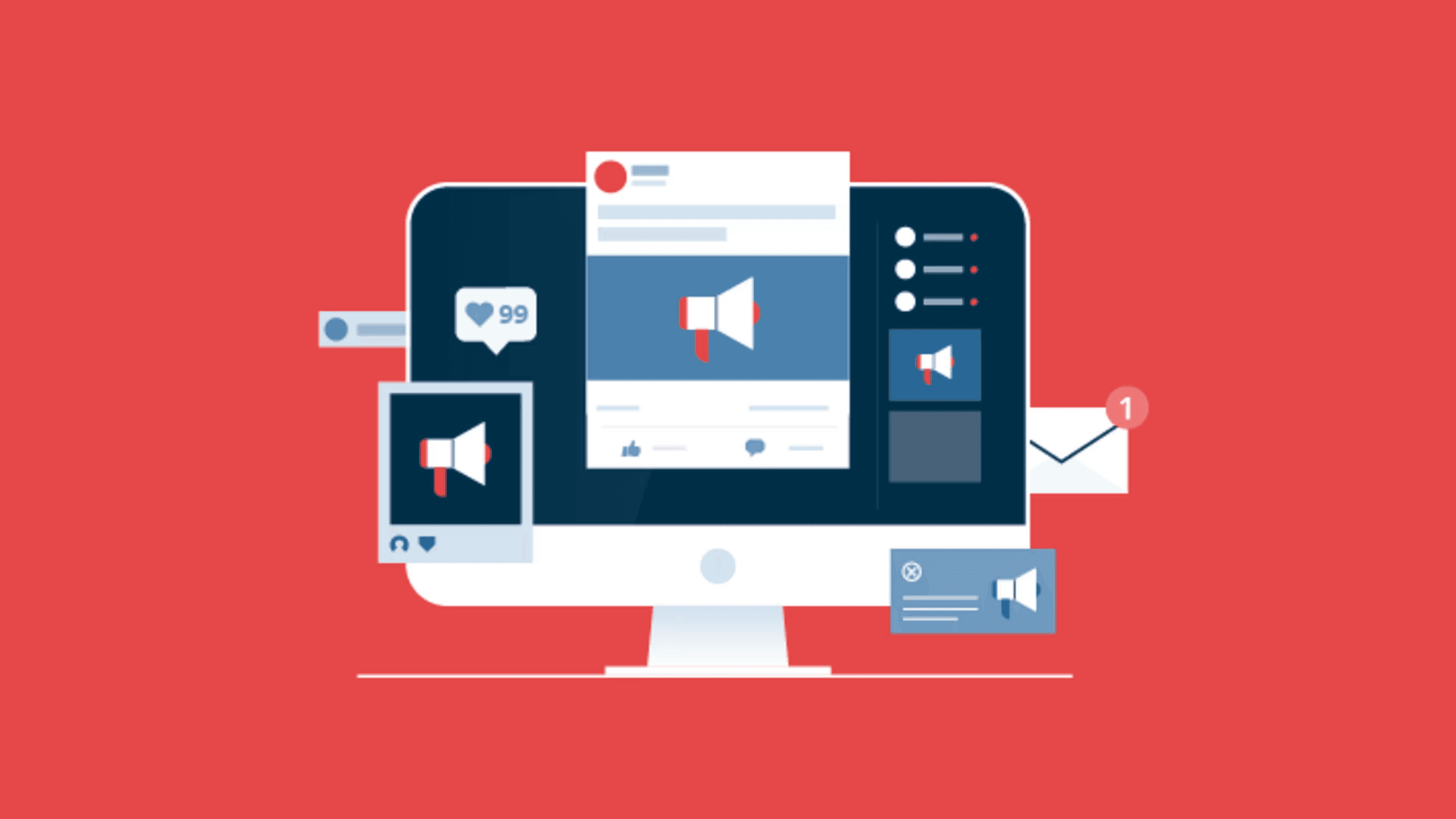
Mobile advertising
Mobile advertising is using different formats of ads suitable for mobile devices to promote products. It helps companies reach people in real-time, receive instant responses from customers, create shareable content, and track the results.
In this article, we’ll uncover why mobile advertising is important, its advantages and disadvantages, and its types. We’ll also unveil how to do mobile advertising with LIKE.TG and provide you with some outstanding examples.
Why is mobile advertising important?
According to Statista, there are around 6.6 billion smartphone users worldwide. They use their mobile devices to explore products, search for necessary information, and order different items. That’s why it’s crucial to adopt mobile advertising. There are many reasons to consider mobile ads for your business, and now we’ll review them all.
First of all, people spend around five to six hours on their smartphones during their spare time every day. This means that they search for information using Google or social media platforms. Customers use their cell phones to order from famous eCommerce platforms like Amazon and eBay and buy food from grocery stores and restaurants. Brands that develop mobile campaigns to introduce their products and lead consumers toward a sale, see a considerable increase in their profits.
With location data and search history, businesses can understand the needs of their prospects and address them. Entrepreneurs can leverage personalization and deliver targeted messages to the right people. Besides, marketers can tailor relevant offers and see real-time customer responses.
Now that you know why mobile advertising is important, it’s time to see the advantages and disadvantages.
Advantages and Disadvantages of Mobile Advertising
Mobile advertising has both advantages and disadvantages. Once you decide to adopt mobile ads to your business, you can reap the following benefits:
messages delivered to people in real-time;
minimum content to achieve results;
instant responses from leads;
shareable content;
higher reach;
increased revenue;
targeted messaging;
personalized offers;
the possibility of online payments to conduct instant transactions;
multiple functions (brands can educate about their product, ask for feedback, advertise promotions, and sell).
However, mobile advertising also has its disadvantages like any other form of advertising. First of all, mobile ads can be interruptive. Some people can be irritated because ads might interrupt their experiences online. People even use mobile ad-blocking apps to avoid seeing advertising on sites they visit. Secondly, if you fail to deliver timely and relevant messages to your customers, your brand can shape a negative first impression on potential customers. That’s why you always need to avoid typos and show ads at the right time. Since phones are different in their shapes and sizes, you can’t be sure that users will see them in the format you wanted them to be. This can also be a problem for users.
Now that you know the pros and cons of mobile advertising, it’s time to explore the types.
Types of Mobile Advertising
The type of mobile advertising you use to attract customers depends on the platform prospects visit. You can select a suitable ad type to place on a website, an app, or on a video streaming platform.
Banner ads. These are image-based ads. Banners are embedded into the web pages and aimed at driving the number of visitors and generating traffic. You can find these ads at the top or bottom of the screen of your mobile device on a website or online media property. Entrepreneurs can share their advertising campaigns with users at a low cost. As a result, you can increase brand awareness without interrupting customers.
Video ads. A mobile video ad is a pre-, mid-, or post-roll video from 15 to 30 seconds in length you can see on YouTube and across sites and applications that run on Google video partners. Users can tap the video to watch it. A creative, unique, and relevant video can increase engagement and establish an online presence.
Native ads. These are ads that match the platform they are used in. You can find them in social media feeds or recommended content on websites. Native ads fit the media format perfectly and are non-intrusive. There are many ways to promote your business with native advertising. You can implement "In-Feed" ads, content recommendations, and search and promoted listings.
Swipe ads. These ads perfectly suit online shopping platforms and companies engaged in eCommerce. They help showcase a product, demonstrate how to use it, and provide a product tour for users. Once customers see this type of mobile advertising, they can swipe it to see all the images a company provides. Each image includes a link to a separate landing page. This format is highly engaging and can bring new prospects to your business.
Interstitial ads. These are full-screen ads that appear when a user loads or closes the app, during the transition to the next game level, or the pause. This type of mobile ad perfectly fits the screens of various mobile devices and attracts customers’ attention. Once you succeed in creating quality content with informative visuals and compelling copy for your interstitial ads, you can gain impressions and more click-through rates.
Now that you know the types, it’s time to figure out how to do mobile advertising with LIKE.TG.
How to do mobile advertising with LIKE.TG?
Since many people use their smartphones to search for the necessary brands and products, mobile ads can bring excellent results to your business. We’ve prepared a step-by-step guide for you to know how to do mobile advertising with our all-in-one marketing solution — LIKE.TG.
Send email campaigns. Since email marketing brings great results to businesses and there are many email users worldwide, there’s a point in sending email campaigns to your customers. With email newsletters, you can communicate the necessary information to your customers, update them on various discounts, promotions, and new products, and offer various perks for loyalty and referrals. With LIKE.TG’s drag and drop editor, you can create outstanding email campaigns. You can do it from scratch or use ready-to-go email templates. Once your email campaign is ready, you can schedule email sending.
Set up a chatbot. Our multi-channel platform empowers entrepreneurs to implement chatbots for Facebook Messenger, WhatsApp, Telegram, and Instagram. Chatbots will help you deliver the necessary advertising messages in mobile apps of the most popular social media platforms and messengers. After leads ask questions, the bot generates personalized offers and provides users with solutions. The product cards and catalogs lead to your website, where prospects can convert into customers.
Design a mobile landing page. Besides having a mobile-first website, you need to consider building a mobile landing page that will lead your potential clients from the ad to the desired action. LIKE.TG’s landing page builder allows you to create a landing page within 15 minutes. Creating a responsive landing page with our service doesn’t require you to hire a professional or have some knowledge of code because the process is simple.
Send SMS campaigns. SMS campaigns are an old yet effective way to interest prospects. It doesn’t depend on the internet, so users can directly receive and see SMS messages from your business. LIKE.TG allows you to reach customers in different countries. Moreover, our platform provides effective marketing instruments to attain success. Personalization enables you to create customized SMS, audience segmentation allows you to send the right campaigns to the right people, and statistics empowers you to analyze the results of your advertising campaigns. Start right away and send your first 10 SMS for free!
Create web push notifications. You can advertise through web push as well. LIKE.TG enables you to send targeted web push ads to your subscribers’ smartphones. Once potential clients receive the notification, they instantly see it on their lock screens.
Now that you know how to incorporate mobile advertising with LIKE.TG, let’s jump into the examples.
Examples of Mobile Ads
There are dozens of amazing examples of mobile ads on different platforms. We’ve found some of them to show how mobile advertising works.
Video Ad on YouTube
Since YouTube is an extremely popular video streaming platform with 2.24 billion users worldwide, it’s no wonder that brands use it to promote their products. Moreover, today YouTube users access the app from their smartphones or tablets, so business owners should be ready with mobile formats of their ads. Below you can see a great example of an ad on YouTube that promotes a band’s new song to interest people and attract their attention to its music.
Ad on Instagram Story
Northumbria University searches for its potential students on Instagram through Instagram Stories. The ad looks natural and non-disturbing. With its help, the university strives to find new students for one year’s masters in Amsterdam.
Native Ad on Facebook
The Wall Street Journal uses Facebook and its native ads to advertise its spring sale. The brand offers people to subscribe at a discounted price. The ad looks natural in the feed and doesn’t irritate users.
Interstitial Ad
Singular, a software solution company, uses interstitial ads to promote its product. The ad appears full screen when you wait for an app to open. The ad contains a call to action button so that users can download Singular’s app if they are interested.
Congrats, now that you know different types of ads and their descriptions, you can decide which of them will enable you to reach your business goals. Hope our examples will help you with your choice.

Minimum loveable product
A minimum loveable product (MLP) is an initial version of a product with basic functionality a company provides to its target audience. It aims at providing value, understanding customers, andreceiving their positive responses. MLP helps collect feedback,determinewhether people lovea certainproduct, and take into account their requirements.
In this article, we’ll unveil the importance of MLP and compare MLPwith MVP(minimum viable product). We’ll alsotalk about how to build a minimum loveable product.
Why is MLP important?
By creating test versions of products and offering them to customers, companies can get the insightscrucial for further product development. After launching a minimum loveable product, entrepreneurs can understand whether people get thecentral idea of the product and like it.
Launching the initial version of a product for the first time and presenting it toits target audience helps companies in product development.This allows businesses to avoid developing an ideal product that fails in the short run. This way, business owners can improve their products based on customers’ feedback andcreate an excellent product people would love.
MLP helps create a unique and innovative product, provide an excellent customer experience, and integrate with other helpful tools. After exploring customer feedback insights, a brand can create a product people like and establish brand awareness. A unique and exciting product will always drive attention and increase a company’ssales volume.
Now that you know the importance of having a minimum lovable product, let’s move to the difference between MLP and MVP.
MLP vs. MVP
Since MLP and MVP are often used interchangeably, there’s a point in discussing the difference between the two terms.
MLP is a test version of a product designed to delight customers and gain their love. It aims at providing solutions to customers and an excellent buying experience.
MVP is a version of a product a company launches for the first time. Ithasminimal features designed to solve customers’ problems and be viable in the market. It’s also necessary to test the product.
Let’s find out how tocreate a minimum loveable product to boost your product development process.
How to Build a Minimum Loveable Product
Here are thesteps you need to take to develop MLP for your company:
Pay attention to design. Your main aim as a brand owner is to ensure a seamless user experience, especiallywhen it comes tousability. Your website should be clear-cut, intuitive, credible, accessible, and relevant for users. To make customers love your brand and revisit your website, you need to ensure seamless interaction. You can enhance the user experience by developing responsive design, keeping your site simple and visually appealing, and using white space.
Create a community.You can create an online presence by building a community on social media. Collaborate with marketers to establish communities oncommunicationchannels your target audience uses most often and effectively promote your product. Consider conducting research to identify your customers’ preferable platforms. As a result, you’ll be able to gather loyal customers around your brand.
Share your story. Customers need to know more about the company they purchase from. That’s why you need to tell your story, share your goals, and manifest your principles.
Collectvaluable customer feedback. Of course, you can’t get customers’ love and trust simply by collecting data. However, listening to your customers and giving them what they need can do the trick. Feedback from consumers isimperative since it can highlight the areas of your product that require improvement. Your clients can tell what they like and don’t like about your product. Use this information to improve your product and give users the solution they need.
Implementonly minimal features. Remember, it’s vital to launch the minimal features and design to save costs. If you spend a lot ofmoney on a fully developed product your target audience doesn’tactually like, you risk paying twice.
Congrats, now you know the importance of MLP, the difference between MLP and MVP, and how to build MLP. Make use of your knowledge to improve your business, and employ LIKE.TG’s tools to promote your products.

Marketing reach
Marketing reach is the approximate number of prospects who can reach your advertising message or piece of content. This metric allows marketers to forecast how many potential customers will see their message, whether it's a social media post, TV ad, online ad, brochure, etc. It enables companies to make informed decisions.
In this article, you'll learn why marketing reach is important, how it differs from impressions, and how to calculate and increase the measurement.
Why is marketing reach important?
Since the main goal of each marketing campaign is to increase brand recognition and acquire new leads, measuring marketing reach is a vital task for each marketer. Generally, it enables them to estimate the possible ROAS and assesses user engagement via paid advertising and organic reach.
Measuring marketing reach allows companies to make informed decisions. With this metric, they can forecast whether a campaign is worth the investment. Each channel provides different benefits, so you'd better find the most appropriate for your business that can generate more potential customers. With this KPI, you can minimize the risks of investing in low-performing channels.
In addition, marketing reach lets you analyze the performance of your campaign. If your reach is high, but the conversion rate is low, you need to discover why your post doesn't work as it should. It can be related to the wrong audience or an irrelevant advertising message. You should consider reach and impressions for a general view of your campaign performance.
Let's make the difference between these two measurements clear.
Marketing Reach vs Impressions
These KPIs are closely connected but slightly different.
Marketing reach implies the number of people likely to see your campaign. It doesn't mean they have interacted with it. It even provides no guarantees that a user will read your message. Impressions mean the number of times your ad or post was displayed on users' screens. This indicator also doesn't guarantee any interactions. You should also remember that impressions are not unique.
For example, you are creating an Instagram post to reach all your followers, but only a part of them will see it. This part or percentage makes up your marketing reach. So, these are unique people who view your content. The number of times users see your post makes your impressions. So, this metric is higher, as a rule. A single user can see your post in their feed, on a friend's Story, or via a link shared by their friend. These three views will count as three impressions, while the marketing reach of a post will be one, meaning one unique viewer.
Now that you know why marketing reach matters, we'll discover how to measure the metric.
How to calculate marketing reach?
If you want to create a promotional campaign on social media such as Instagram, Facebook, LinkedIn, Twitter, or using Google Ads, you don't have to make any calculations. These platforms provide users with an automated estimation of the potential audience size. These won't be accurate numbers, but they are very close to the real things. For example, Instagram calculates reach by sharing the number of all unique users who viewed your post. Facebook calculates reach as the number of individuals who viewed your post at least once.
You can still calculate your campaign's marketing reach manually. Use the formula below.
Marketing Reach = Impressions/Frequency
Frequency means the number of times a user could see your ad during your campaign length.
To discover the frequency, use the formula below.
Frequency = Impressions/Unique users
Now that you know how to calculate your marketing reach, you might be interested in improving the metric. Keep reading.
6 Ways to Increase Your Marketing Reach
In this section, we'll share tips to help you improve your posts' marketing reach and advertising campaigns.
Find influencers. Look for people having authority among your potential customers. They can promote your brand and be your first clients. If you're starting, choose micro-influencers. They are easier to partner with and probably have more trust among their followers since big influencers are often considered money-makers by their followers. Ask them to show how they use your product in their everyday life.
Partner with other businesses. Increasing your network allows you to reach new audiences. Find businesses that are not your competitors but share the same audience and partner with them. This way, you can always get new leads and boost your brand awareness.
Send email campaigns. Email is an effective way to improve engagement and sales and build long-lasting relationships with your audience. You can use personalization and segmentation to produce unique and relevant offers for each subscriber. With this channel, you can maintain relationships with your existing customers and nurture potential clients. LIKE.TG lets you send up to 15,000 emails to 500 subscribers for free every month. You don't need to code or even design a template from scratch.
Create a referral program. People trust the recommendations of their friends more than ads. Every satisfied customer can bring in new people. Offer your customers additional perks in exchange for promoting your product or service. This way, you'll improve the retention rate, increase your client base, improve brand awareness, and boost engagement.
Segment your audience. It is probably the most effective way of increasing your reach and sales. Learn your potential client's needs, pain points, and desires. Then, you use this data when creating an advertising campaign or email campaign. You can strike the right chord by providing relevant and timely offers.
Promote your social media accounts. For more people to see your posts on social media, they need to know about them. Offer your email subscribers to follow you on Facebook or Twitter by adding social media icons to your campaign. You can easily do that with the LIKE.TG drag and drop editor. Let your blog readers follow your social accounts and add this possibility to your website and live chat. With LIKE.TG, you can create a live chat for your website to convert site visitors into customers.
Congrats, now you know why marketing reach is important and how to improve this KPI. Promote your business and bring communication with your audience to the next level using LIKE.TG marketing tools. You can send email campaigns and web push notifications, create chatbots, landing pages, and courses for free. Register and start right away!

Media channel
A media channel is a medium between a brand and its target audience. It helps communicateadvertising messages to your customers effectively via the most suitable channel.
Choosing the right media channel or creating a promotion mixis an A-list task for each brand since it helps build long-lasting and trustful communication with the audience. In this context, “the right medium” means a perfect channel that is preferred by a client and helps achieve a certain business goal.
When choosing a channel, you should clearly understand your end goal. If you aim to increase your outreach to larger audiences, TV advertising may be the best choice.Chatbots are just for youif your goal is to establish two-way communication.If you need to educate your clients on how to make the most out of your product, content marketing is the very thing. It coverslanding pages, your company’s blog, video tutorials, webinars, podcasts, etc.
Let’s have a look at the variety of media channels available to help youchoose the one that works best for you.
Media Channel Types
We can divide all media channels into three main categories: print media, broadcast media, and digital channels. Let’s uncover their opportunities.
Print media allow brands to reach customers according to their geographic situation, language spoken, or particular interests. Besides, they help companies build their reputation and brand image and maintain engagement. On the other hand, this channel is expensive and provides one-way communication only.
Print media channels include:
newspapers;
magazines;
brochures;
leaflets;
flyers;
banners;
books;
business cards.
Broadcast media have a powerful influence on people, guarantee high coverage, and can attract user attention well. On the other hand, just like with print media, deploying this medium is pretty expensive. It does not provide any interaction with the audience and is considered to be intrusive.
Broadcasting media channels include:
television;
radio;
movies.
Digital media channels are the most popular nowadays since every brand can choose the best channel in terms of price, user engagement, preferred devices, and goals they want to pursue. Most of the digital media provide two-way communication with customers, quick response, high engagement rate, segmentation opportunities, and ways to measure the effectiveness of this media channel.
Digital media channels include:
website;
landing page;
search engine;
blog;
mobile;
email;
social media networks;
podcasts;
videos;
webinars.
Hence, there are many channels for you to choose from, so we have that covered. Take your budget, goals, and your customers’ preferences into account. LIKE.TG helps communicate with your clients for free via email campaigns, chatbots, and web push notifications, so start reaping your benefits from these channels today!

Marketing plan
A marketing plan is a document that includes goals, target audience, strategies and tactics, timeline, and budget and is aimed at executing a marketing strategy in a specific timeframe. It helps align every company’s department, follow vision and goals, and execute a strategy successfully.
In this article, we’ll unveil the 6 reasons to develop a marketing plan and how to write it.
6 Reasons Why You Need a Marketing Plan
Whether you are building a new company from scratch or discovering new ways to reach more customers and sales, it’s critical to develop a marketing plan. This strategic document will help make your goals measurable, align all departments’ work, and evaluate all threats and opportunities. There are even more reasons why you should consider creating a marketing plan.
It defines the focus of your work. Since a marketing plan is a blueprint for implementing your strategy and attaining your goals, it sets your direction. Your plan should be well-thought-out so that you can reach your goals. A marketing plan ensures that every step you take contributes to the development of a business. With its help, you can make sure you use your company's full potential to generate leads, attract customers, increase sales, and reach revenue objectives.
It allows you to manage resources efficiently. Often brands without a marketing plan face a lack of resources. This situation emerges because the company’s team doesn’t know exactly what it needs or should do. A detailed outline of your actions prevents you from having such a dilemma. You can determine the budget when your marketing plan and strategy are ready. With a clear plan of action, you’ll avoid additional expenses for your team to think of the next steps. You need to bring the plan to life with the help of human and financial resources.
It ensures consistency among departments. An accurate marketing plan will help your team do their tasks without switching from one activity to another. This way, they will be able to meet the needs of consumers without overwhelming them with information or confusing their actions. Consistency is essential for your brand image’s integrity. Your customers should know what they can expect from your brand. Having a plan enables you to provide consistent messages across multiple channels. As a result, your company gains trust, establishes a positive image, and builds a good reputation.
It helps identify the target audience. A marketing plan requires you to explore the market and create a buyer persona. With its help, you’ll have a clear picture of your target audience. You need to do it before creating a marketing plan. Once you finish it, you can tailor a marketing strategy based on these people’s preferences, needs, pain points, and desires.
It enables you to find out competitors. Competitor analysis is an essential part of every quality marketing plan. You should do it to prepare a product that stands out from the competition. With SWOT analysis, you’ll be able to know your threats and opportunities. You’ll also be aware of competitors’ differentiators, pricing, features, and customer reviews. With this information, you can improve your product to meet consumers’ needs.
It ensures clarity. Companies with seamless performance know what they do and want to achieve. With a clear strategy and detailed marketing plan, a brand’s team has absolute clarity of its tasks and objectives. Employees are aware of their roles and how they contribute to the achievement of the key targets. They know their responsibilities within the company and provide support to other departments when necessary.
Now that you know the reasons, it’s time to jump into detailed instructions on how to write a marketing plan. It will come in handy for both starters and experienced entrepreneurs.
How to write a marketing plan?
The role of a marketing plan can’t be overrated. With its help, you’ll effectively target your customers and use resources for marketing efficiently. That’s why we recommend you develop a marketing plan. In this section, we’ll provide you with a step-by-step guide.
Determine your mission statement. A mission statement is a document that defines the purpose of your company and how you serve your target audience. You need to describe the nature of your business, the product or service you provide, and your ideal customer. You should write several sentences. A mission statement provides a clear description of the target audience so that all the marketing efforts are put into generating leads and acquiring new customers. Moreover, it helps every team member to know their role in marketing planning.
Identify KPIs. Metrics are crucial for tracking and assessing the success of your marketing plan. So, decide on the KPIs that will help you do it. With KPIs, you’ll be able to evaluate the successes and failures of your marketing strategy, campaign, promotional activities, sales, etc. You’ll establish short-term objectives and monitor whether your team manages to reach them. For example, if your mission is to win customers interested in cooking, you can track your website’s organic visits.
Create a buyer persona. The next step is to develop a buyer persona. Before developing a product, you need to research your target audience and their needs. Explore market segments to choose a group of people who search for a product like yours. A buyer persona represents your ideal customer. Gender, age, occupation, location, interests, preferred communication channels, and hobbies are the things you should know about your customers. This information helps you decide what and in what way to market. Make sure you know your target market well before making an offer.
List your content ideas and strategies. A marketing plan should clearly define the content you want to create, such as blog posts, ebooks, infographics, videos for YouTube, photos, etc. Once you decide on the type of content, think of your schedule. Publish your articles, social media posts, photos, and ebooks regularly. For instance, once a day, week, month, etc. Define the necessary content volume. Don’t forget to set goals for your content. To figure out whether your content is successful, assign KPIs. They can include social media, organic, and referral traffic. Choose the most performing channels you’ll use to distribute content: Facebook, Twitter, YouTube, or Instagram. Consider using LIKE.TG to distribute information through preferred channels. You can set up chatbots for Instagram, Facebook, and WhatsApp to provide instant responses to common inquiries, send relevant email campaigns to stay on top of consumers’ minds, and use SMS and push notifications to inform customers about price reductions, new releases, and seasonal sales.
Define your budget. You can use free platforms to distribute content, yet hidden expenses remain. That’s why you need to allocate financial resources to your marketing team. Your marketers might need money for freelance fees, sponsorships, new hires, etc. Outline all your expenses in a marketing plan.
Identify competitors. You know how to market your product when you know your rivals well. You need to outperform your competitors to draw customers’ attention. Research your rivals' market share, features, prices, marketing strategy, customer reviews, differentiators, strengths, and weaknesses during your competitor analysis. After, use this information to your advantage. Identify gaps in features, advertising strategy, channels, etc. Develop your unique value proposition or improve the existing product or service to stay competitive within the market.
Congrats, now you know what a marketing plan is and why it’s vital. Hope that you’ll create a detailed plan with our guide and make informed business decisions.

Media planning
Media planning is identifying the platforms, content types, and marketing messages the company should use to reach its goals within a particular advertising campaign.
In the article, we explain why media planning is important, highlight its benefits, compare it with media buying and provide the steps to create a successful media plan.
Why is media planning important?
According to HubSpot, 70% of marketers actively invest in content marketing, and 24% are going to increase their investments. These statistics show the global trend of spending more costs on product promotion. However, huge investments sometimes mean huge losses. To be confident in your spending, media planning is necessary.
The main goal of this process is to reach the company's goals and optimize the costs needed for product promotion. Successful media planning means that the business attracts new customers, increases its market share, raises people’s brand awareness, and builds a strong reputation by advertising. Planning helps determine all critical points of promotional campaigns and reach the brand’s objectives smoothly and without overspending.
On the other hand, promoting a product without a well-defined strategy may mean money loss and unpredictable results. You can damage your brand image if advertisements are placed in inappropriate media or target the audience you do not work with. Media planning helps avoid all these roadblocks and makes you confident that the future campaign will be successful.
In today’s digital world, developing your promotion plan is necessary to reach the top in the sphere. Discover all the benefits of media planning in the next section.
Benefits of Media Planning
Marketers use media plans as a basis required to launch any advertising campaign. Below we explain why it is so vital in achieving the company's promotional objectives.
It helps set the correct goal. Advertising without an aim can be a waste of money. You may want to increase brand awareness, attract more customers, make clients buy again and again, or build a positive reputation. A clear goal is required in media plan development as it directly influences your promotions' success.
It allows marketers to develop effective creatives and choose the best time to promote. The way you transmit your advertising messages to potential clients plays a significant role. To make your advertising campaign successful, you should ensure that creatives are eye-catching and persuasive. Media planning also lets marketers determine the time preferable for the target audience to convey the messages effectively.
It helps optimize the advertising budget. There are often a few of the most relevant platforms that you can use in the promotional campaign. You can determine them and focus on these media channels to increase your ROI. Paying too much attention to the less effective platforms means overspending on media buying. One more advantage of media planning is that having seen the whole advertising strategy at once allows you to optimize the costs needed to develop creatives.
It is the way to control the performance of your ads. Setting concrete goals means that you can measure the success of your promotions during the whole campaign. It allows you to see any problems or deviations at once and fix them as fast as possible. Moreover, having all the data, you can analyze the performance of your ads after the campaign and improve your plans to make them more successful.
Now you understand why media planning can make your promotions much more effective. Continue reading to discover its difference with media buying and get tips on how to combine these processes while developing your future marketing strategy.
Media Planning vs Media Buying
Some business owners may misunderstand the roles of a media planner and media buyer and get confused about why both these specialists are important. In this section, we compare these two professions and explain how media planners and buyers work together to create successful advertising campaigns.
Media planners are responsible for developing a promotional strategy by using different media channels. Usually, media planners analyze your audience and competitors, set specific goals, develop advertising messages, identify the best media channels and time for future promotions, and set the budget. Media planners can work with paid, owned, and earned media, and their choice depends only on the goals of the advertising campaign.
Media buyers start their work when they get a finished strategy from media planners. These people work only with paid media. Media buyers are responsible for choosing the best platforms within the stated media channels and buying space to place the company's advertisements there. They control the performance of the ads and manage the usage of the fixed budget. Media buyers can also suggest changes in the estimated media mix if they know how to reach and persuade the target audience better.
Sometimes, one person may combine both media planner and media buyer skills. However, in most cases, these two specialists work together. Media buyers can discuss with media planners the peculiarities of different platforms, their costs, and the audience that uses them while creating a strategy. On the other hand, media planners often control the performance of the promotions during the whole campaign and suggest necessary changes in the advertising messages if it is necessary.
Media planning may seem difficult, but it is not so if you understand the main points. In the next section, we provide a step-by-step guide on developing a well-defined plan and making your advertising campaigns more effective.
How to create a media plan?
Most big companies hire a media planner to succeed in their advertising campaigns. However, spending lots of money on a professional is not necessary if you do not have a huge budget. Below we provide the main steps you should do to create a media plan and make your campaign persuasive and cost-effective.
Identify your advertising goals. It is impossible to measure the success of your campaign without its clear aims. Some marketers advise business owners to set SMART goals to make them reachable. SMART means that the objectives of your campaign should be specific, measurable, attainable, relevant, and time-bound.
Study your target audience. Once you set the aims, it is important to understand to who you are going to show your ads. Identify your buyer personas, and clarify their demographics, needs, preferences, and a lifestyle. Think about the ways to persuade them to buy your products.
Conduct research on the competitors. To develop a strong competitive advantage, it is vital to understand how other companies on the market promote their products. Analyze your competitors’ advertising campaigns, and highlight the pros and cons of media plans of each brand. Use this data to improve your future advertisements and avoid roadblocks other businesses may have.
Define the tone of voice and visual language of your advertising messages. Firstly, it is vital to understand how to persuade people to choose your brand. Develop the advertising messages based on the goals you have identified. Secondly, transmit this information in the way your audience is ready to perceive it. Some companies may have a brand platform with an already developed tone of voice and visual language. Otherwise, you should define them based on the preferences of your target audience.
Develop your ideal media mix. You should concentrate on a few effective media channels to avoid overspending. Identify the platforms the target audience uses the most often and discover the cost of advertising on them. Allocate the percentage of the budget you are ready to spend on each platform and develop a media mix to reach the campaign’s objectives.
Estimate the budget. Remember to include the salaries of the specialists and the taxes you will need to pay during the future advertising campaign. Try to optimize costs, but do not skimp on content creation too much if you want to reach good results.
Launch a campaign and analyze the results. The work of a media planner does not finish after the campaign launch. Track the results and be ready to make changes immediately if something goes wrong. Analyze the performance of the whole campaign and use these insights to make future promotions even better.
Congrats, now you know what media planning is and why it is important, know its benefits, and the difference between planning and buying. You can create a well-defined media plan to advertise successfully.

Marketing technology stack
A martech (marketing technology) stack is a set of technologies marketers apply to bring their marketing activities to life. It covers software, tools, and platforms that allow companies to automate, streamline, and analyze their marketing efforts. By combining various technologies, marketers manage to support their marketing activities, improving effectiveness and productivity.
In this article, we’ll unveil why martech is essential for your business and uncover its main components. We’ll also explain how to build a martech stack for your business.
Why is martech important for your business?
Martech is essential for every business because it helps implement marketing strategies at their best. With a set of the necessary technologies, you’ll be able to improve the effectiveness of your marketing efforts and bring your company to growth. There are even more reasons to consider martech for your business. Let’s uncover them all.
Data-driven decisions. With marketing technology, your teams can access to all the necessary tools to conduct research and analysis, supporting your marketing efforts. Your marketers can analyze customer behavior before launching campaigns and ensure they are relevant and timely. After implementing marketing campaigns, your teams can feel free to assess campaign performance using special tools.
Automation. Martech stack implies using automation for repetitive and time-consuming tasks. As a result, email campaigns, social media posts, and lead nurturing are put on autopilot without addressing an agent. Automation helps you improve productivity by focusing on more urgent tasks rather than spending time on routine marketing activities.
Cost-effectiveness. Although you need an initial investment when incorporating martech, the technology tools you’ll use ensure long-term cost savings. Moreover, it allows your company to properly manage its marketing budget and focus on effective marketing strategies. It results in a higher return on investment and appropriate budget allocation.
Competitive advantage. When you use martech tools, you ensure your business stays ahead of others. If you utilize technology for your company, you are closer to innovation, targeting, and better marketing performance. With marketing tech tools, you can really get a grip on your audience, shoot out spot-on campaigns automatically, keep tabs on how they perform, and fine-tune your marketing game for even better results.
Personalization. Marketing tools enable you to collect customer data and decide on the campaigns, their content, and other marketing approaches. With their help, you can develop personalized marketing campaigns targeted to your audience. Personalization is essential for every company because it allows you to improve customer experience, encourage higher engagement, and boost conversions.
Customer relationship management. Martech covers many crucial tools for a business, including CRM. A CRM system is essential for storing customer data in one place, managing customer relationships, and tracking the status of orders. When you use CRM and nurture leads and customers right, you can notice positive changes in customer retention, satisfaction, and customer lifetime value. CRM from LIKE.TG enables you to automate sales and customer communication, taking care of your customer data and storing it in one place.
Multi-channel approach. Today, companies interact with prospects and customers across multiple channels. This way, clients can use their preferred channels, and businesses ensure their messages are visible. Social media, email, and websites are the channels you usually use for marketing. Having martech for these communication channels is a must if you want to expand your reach and grow your business. Marketing technology tools help you handle your marketing activities across several channels, providing enhanced customer experience.
Better collaboration between departments. Collaboration tools are also a part of martech. They help you facilitate coordination between departments and ensure proper communication with them. With collaboration tools, the work of your company teams is aligned. It results in better teamwork and faster achievement of goals.
High level of adaptability. Since marketing trends and customer behavior change fast, it’s essential to adapt. Martech helps companies quickly react to changes within the market and develop innovative ideas. This technology allows you to stay ahead of the competition even in changing environments.
Now that you know the benefits martech brings to businesses, it’s time to jump into the marketing stack components.
Marketing Stack Components
A marketing stack is a term used to unite various tools used by marketers. Marketing stack components differ based on the business and the goals it strives to achieve. In this section, we’ll uncover the most important components every company needs to succeed, so let’s start.
Customer relationship management. Tools related to customer relationship management help take care of interactions with customers. They ensure seamless communication by saving and storing customer data and information connected to customer behavior. CRM allows you to analyze all contacts with clients during their customer lifecycles. With LIKE.TG, you can establish a robust database and streamline proper communication with customers.
Marketing automation. With marketing automation, you can put repetitive tasks on autopilot. This technology helps send greeting emails, perform lead scoring, set up meeting reminders, and deliver abandoned cart messages without human involvement. Automation 360 empowers you to connect eight marketing channels and streamline your sales pipeline with little or no human involvement.
Web analytics. Martech stack implies web analytics. Analytics tools like Google Analytics, Adobe Analytics, or Matomo provide insights into customer behavior and client interactions with your site, marketing campaigns, or specific marketing activities. You can find out whether your campaigns are successful after assessing their performance. When you have some issues with your marketing efforts, analytics tools will identify them. As a result, you’ll be able to address the gaps and prevent customer dissatisfaction promptly.
Email marketing. Bulk email software helps you effectively manage email campaigns. Email services enable you to design professional emails in no time by using ready-to-go templates. Without the code knowledge, you can add all the necessary elements, design your emails, segment them based on customers, and send them to the right audience segments. You can set up a day and time when your emails will be delivered to customers and prospects. The bulk email service from SendPulse has a no-coding editor and friendly interface that allows you to design highly personalized email campaigns that cater to the needs and requirements of your customers.
SEO tools. SEO tools are necessary for every company striving to become visible in search results. With these tools, you can optimize your content and site, in general, to perform better in SERP and take top positions on result pages.
A/B testing. When it comes to figuring out which version of your marketing campaign or content clicks better with customers, A/B testing comes in handy. With its help, you can identify the best option based on the performance of both versions.
Social listening tools. If you actively promote and sell your products through social media, it’s necessary to utilize social media management tools. They let you scoop up all those social media interactions and customer moves, then dive deep to analyze what's happening. These insights will help you with your further product promotion, update, or improvement. Listening to customer feedback on social media is essential for your business growth.
Survey and feedback platforms. The interactions with clients don’t end at the checkout. Relationships with customers continue with the help of surveys and feedback forms. They help you show that you value customers’ opinions regarding your product or service and establish loyalty. However, you need to use specific platforms since you can’t manually create surveys and analyze all the data. SurveyMonkey, Typeform, and Google Forms are examples of services businesses usually use to survey their customers. These platforms make it much easier for you to obtain and analyze all insights. It results in fewer gaps and enhanced customer experience. With LIKE.TG, you can design customer surveys and send them out automatically through email and chatbots after setting up display conditions.
Customer support. Customer support can cruise along smoothly with some extra tools in your toolbox. Chatbots and live chat can become the sources of information where users can immediately receive answers and resolve their problems. By training chatbots to communicate the information to customers clearly, you improve satisfaction with your company and encourage loyalty. Live chat lets users connect to a human agent to get open-ended answers. LIKE.TG allows you to create chatbots and add a live chat widget to your website, enabling your customers to get 24/7 support.
Now that you know the elements, let’s proceed to the next section to find out how to create a martech stack for your company.
How to build a martech stack for your business?
Creating a marketing technology stack for your business involves choosing and utilizing various tools that help you with your marketing activities. In this section, we’ll provide detailed instructions on how to make it right. So, let’s begin.
Identify your marketing goals and needs. Before diving into the process of choosing the platforms, consider determining your main objectives first. However, there are other things to pay attention to. Ensure you understand your company's needs, customer behavior, and your team’s skills. Be prepared for technology that requires some basic knowledge and skills to handle.
Outline your marketing strategy. The second step implies having a clear understanding of your marketing strategy. Having a ready strategy helps you outline the technology you need. You’ll know what platforms to use to perform specific marketing efforts and achieve your goals. Identify the best channels to reach your audience with the right marketing message.
Determine touchpoints with customers. The next step is identifying your touchpoints with people during their customer journey. This is the right time for you to find out how clients interact with your brand, what communication channels they use, and what they like and don’t like. Identify areas where your product or service needs improvement.
Identify your marketing budget. Think of the costs you can spend on marketing tools. It will help you wisely allocate resources and find the right solutions for a reasonable price. Make sure to allocate a budget based on the priority of tasks you should complete.
Choose the right platforms. Once you figure out how much you are ready to spend on each tool, it’s time to find the best technology for your business. Focus on essential tools like CRM, analytics, SEO, marketing, and email automation tools. They ensure proper communication with customers, promotion, and selling processes. Then, select the services based on their priority for your company.
Provide your teams with training. Since sometimes martech requires special skills and knowledge from their users, it’s essential to establish a training program. Prepare your team members for these tools by teaching them how to use them. It will help you save time and improve productivity. Your marketing team won’t need to figure out how everything works by themselves.
Monitor and evaluate your martech performance. After you start using tools for your business, make sure to keep an eye on the performance. Monitor the progress of your marketing campaigns, communication with customers, effectiveness of social media content, etc. If something has drawbacks, you’ll be able to handle them promptly.
Congrats, now you know why martech is crucial for your business. Register in LIKE.TG to enjoy the benefits of chatbots, automated SMS campaigns, email service, CRM, and other valuable marketing tools.

Media mix
A media mix is a combination of channels used by companies to achieve their marketing goals. It allows brands to increase their outreach significantly with the help of both offline and online media channels.
Why is media mix important?
A media mix is just the thing each brand should try. Creating the right combination of channels allows you to reach the maximum number of people, ensure tailored customer experience, improve your ROI, and, of course, identify the most profitable channels.
If you mainly invest in SMMandsee great results but want to try email marketingwithout much loss, you can allocate half of your budget to your SMM campaigns and another one — to emails. Besides, email marketing is one of the most effective digital strategies you can try and use on a permanent basis for free. LIKE.TG allows you to send up to 15,000 emails free of charge every month.
With a well-thought-out media mix, you can build brand awarenessby implementingsearch engine marketing and socials and enhance two-way communication with customers via chatbots. Moreover, you can kick it up a notch by informingyour clients about upcoming sales and events via emails and notifying them about recent articles and publications via instantweb push notifications.
If you want to understand how to use media mix effectively, you need to get acquainted with media mix modeling. Let’s move to this concept.
Media Mix Modeling
Media mix modeling is an analytics approach that allows marketers to predict the performance of each channel they use. It helps create a clear picture of their marketing efforts, for example, how each channel contributes to reaching their goals —increasing blog traffic, conversions, ROI, etc.
With this technique, you’ll find out the relation between dependent and independent variables. For example, you’ve paid a celebrity who is a powerful influencer to promote your products and expect the N-number in your followers’ base to increase. In this situation, your Instagram traffic is a dependent variable, and investing in influencer marketing is an independent variable.
Data collection and thorough analysis are a must in media mix modeling. You need to gather and store all the figures you get to determine whether this or that model works. With this approach, you can take into account the factors that you can’t influence, such as weather, season, and economic crises. Although you need several years to get accurate results, you will be able to reveal the way they influence your revenues. Finally, you’ll explore how each channel of your media mix contributes to your revenue, whether you’ve allocated costs correctly, and most importantly — you’ll be able to make predictions for the future based on your findings.
For an easy start, we’ll provide you with some tips to optimize your media mix.
How to Optimize Your Media Mix
Starting from nothing is always a challenge. We offer you some effective tips to create a profitable media mix.
Collect customer data. The more — the better.Try to gather this data duringevery touchpoint of interaction with a particular client that can influence your revenue. You should understand how a user engages with your brand via each channel. Set the most important metrics that will help you track the performance of each channel while reaching your goal. Focus on several vital measures that will tell you more. Make use of special analytics tools to aggregate the necessary data.
Invest more in digital channels. The reason is obvious — it’s pretty easy to analyze the effectiveness of online channels. Running a campaign on TV or investing in guerrilla marketing will make you face the problem of measuring the results. You won’t be able to tell for sure how much money a billboard or TV advertising has brought you. While running email campaigns, you can track the performance of each email and discover the results it yielded in the reports.
Choose a marketing platform. We strongly recommend that you use a multi-channel marketing platform with its own CRM because it will provide you with a holistic marketing approach. You’ll be able to try several channels and effectively combine them within one service that stores all the data and information about the clients. This way, you’ll have a clear picture of your marketing efforts at hand.
Congrats, now you know the benefits a media mix can bring to your business, what a media mix modeling is, and have some tips to get the ball rolling. Make use of multi-channel marketing platforms likeLIKE.TGto find the best combination of channels for your business.

Marketing strategy
A marketing strategy is a well-thought-out plan encompassing activities to convert leads into customers and reach the brand’s long-term and short-term goals. It implies understanding consumers’ needs, selecting communication channels, and developing a competitive advantage.
In this video, Alex dives into the 3 fundamental components of an effective marketing strategy.
In this article, we’ll review the 6 types of marketing strategies and get to know how to create a successful strategy for your business.
Why is it important to have a marketing strategy?
Business owners spend time and money to develop a clear and detailed marketing strategy and contribute to the success and growth of their companies. A strategy that encompasses the target audience, company objectives, vision, positioning, and activity plan for social media channels, website, and ads enables you to move towards your business objectives. As a result, you target the right audience with relevant offers.
A marketing strategy outlines your short-term and long-term goals and sets the direction towards their achievement. This blueprint will help you decide what you need to do in the upcoming day, week, month, and year to improve sales, reach more customers, and increase revenues. A plan ensures that you stay consistent across different marketing channels and provide relevant content.
If you want to know more benefits of having a marketing strategy, let’s review them in detail. Brands prepare plans because they help
understand customers’ problems and provide relevant solutions;
allocate resources wisely;
stay consistent across different marketing channels;
provide consumers with relevant content;
create advertising campaigns that resonate with the target audience;
establish businesses that stand out;
maximize profits;
utilize resources efficiently;
cater to the customers’ desires and needs;
communicate your value and benefits;
Now that you know why it’s important to have a marketing strategy, it’s time to explore the types. The next section will help you figure out which one you need.
6 Types of Marketing Strategies
You can find various types of strategies, yet not all of them help attain the same goals. We’ve listed the most effective and popular marketing strategies companies use daily. After reading this section, you’ll be able to choose the most suitable ones for your business needs.
Email marketing strategy
With more than 4 billion email users worldwide, email marketing remains one of the most effective marketing approaches. You can appeal to customers on your list with product features, enticing offers, and new releases. This method helps you communicate the value of your brand and keep customers engaged between the purchases in a non-intrusive way.
If consumers show interest in your product and company, you can easily reach them through email campaigns and start a conversation. Your main task is to develop relevant, consistent, and appealing emails with quality content. Luckily, now many email marketing tools help build compelling email campaigns. LIKE.TG’s email builder allows you to design an appealing email from scratch or use one of the ready-to-go professional email templates. You can send 15,000 emails to 500 subscribers for free.
For example, below you can see how to create an email campaign with LIKE.TG’s email builder.
Social media strategy
The number of social media users is constantly increasing. It indicates the necessity to develop a specific social media strategy. A detailed outline for your actions is a must if you use social media networks for promotion. Social media channels will help you increase sales, boost website traffic, establish brand awareness, etc. You can find potential customers and demonstrate the main benefits of your product on YouTube, TikTok, Instagram, Facebook, and Pinterest. Promoting your product on social media networks empowers you to encourage lead generation, improve conversions, and foster relationships with prospects.
For example, you can create a branded hashtag and use it on various social media platforms. It will help you establish brand awareness and encourage customers to tag your brand. Coca-Cola uses branded hashtags to market and promote its new products.
Content marketing strategy
Content plays a vital role in keeping users engaged and initiating a sale. Content creation should be your priority because only quality informative and interesting articles, blog posts, videos, podcasts, PDFs, and social media ads can grab people’s attention. A powerful content marketing strategy contains buyer personas, business cases, brand positioning, action plan, and value proposition. An effective and well-thought-out strategy results in increased visibility on search engines, better traction on social media networks, and customer trust.
Let’s take McDonald’s “Our Food Your Questions” campaign. McDonald’s Canada decided to run a campaign and answer all consumers’ questions about the brand’s products. By responding to customers’ inquiries, McDonald’s managed to build a trusting relationship with its target audience and change perceptions. Since people love honesty and transparency, the campaign had great success.
SEO strategy
Search engine optimization helps your website’s content appear in the top results of search engines. Organize your content so that users can find it easily when they type the query in the search field. As a result, users see your website and content when they search for answers to specific questions. Quality content encourages people to visit your website and read articles. As a result, your organic traffic improves. SEO strategy allows you to stay on track with consumers’ needs. A detailed plan of action enables you to choose relevant topics, use the necessary keywords, and deliver blog posts on time.
Create SEO content. When you write articles, make sure to include high-quality information. Use different formats of visuals, like infographics, photos, videos, etc. It will enable you to provide content that looks appealing and engaging to readers.
The infographic below provides readers with tips they will definitely remember. It’s visually appealing, short, and sweet.
Public relations strategy
PR strategy enables marketers to share a company’s value with society and build a positive public image. The strategy is essential for business owners who want to maintain a favorable brand image in the eyes of stakeholders, competitors, media, governmental institutions, etc. Your PR team should be ready to prepare news releases, become spokespeople at various events, organize press conferences, search for cooperation with other businesses within the same industry, and pitch stories to the media. It helps you drive interest, build a positive reputation, inform people about a product, and increase demand. After creating an effective PR strategy, you’ll be able to reach your goals in the media field.
For example, participating in events is a great idea. ContentTECH Summit will be a perfect choice for marketing platforms ready to bring innovation to customers. It’s a great opportunity to promote a new product.
Marketing communications strategy
Your team should consider the company's main message and value proposition when creating this strategy. Organize meetings and brainstorm with your team members to create a message that communicates your product’s value and benefits. Make sure your value proposition resonates with the needs and problems of your target audience. To develop a relevant strategy, consider exploring your demographics, understanding customers’ needs and desires, identifying their pain points, and using the right mediums.
For example, Patagonia developed environmental responsibility and animal welfare programs to show customers how they produce its products.
Now that you know the main types, let’s reveal how to develop a successful marketing strategy.
How to create a successful marketing strategy?
Reaching your short-term and long-term business goals requires you to develop a clear and detailed action plan. If you want to build a powerful marketing strategy, we’ll show you how. Follow our step-by-step guide to do everything right and bring success to your brand.
Determine your primary goals. Goal-setting is effective when you have SMART goals. SMART stands for specific, measurable, achievable, relevant, and timely. To have your marketing efforts aligned, you need to identify your business goals. The objectives you set depend on the product you offer and market. Your target can be related to building brand awareness, reaching new customers, boosting sales, etc.
Create a marketing plan. While a marketing strategy outlines the reasons to take specific actions, a marketing plan is a blueprint of what you need to do to attain your goals. Include the necessary actions, yearly budget, essential initiatives, and suitable marketing channels.
Research competitors. Competitor analysis will help you identify your rivals and the products they offer. You can define your competitive advantage by outlining their features, unique value proposition, and advertising strategy. After conducting an analysis, you’ll be able to identify gaps in the market, unveil trends, and develop a product that meets expectations.
Develop buyer personas. Conduct research to understand your customers and identify their needs, desires, and pain points. After the analysis, you’ll unveil their buying patterns. Define your ideal customer, including occupation, gender, age, interests, problems, needs, location, etc. Make a short description of your customer. For example, Linda, a young woman in her 20s living in a city, is looking for books in economics necessary for her research. Remember, designing a buyer persona is a must for a successful and effective marketing strategy.
Choose relevant tools. Many marketing tools will help you receive customer insights and manage your marketing efforts. Google Analytics provides insights into your web page's performance, Agorapulse empowers you to organize your social media activities ahead, Ahrefs allows you to find relevant keywords, and LIKE.TG enables you to automate communication with consumers. The service helps you design and send appealing email campaigns, set up chatbots, and deliver SMS and web push notifications.
Choose necessary media. There are three main types of media: paid, owned, and earned media. Paid media refers to the mediums you spend money on to promote your product. Examples include direct mail, billboards, magazines, websites, etc. Owned media is the materials your team created, like photos, articles, blog posts, posts on social media, videos, podcasts, and more. Earned media refers to user-generated content. Examples include tweets about your product and brand mentions on Instagram, Facebook, and TikTok. Organize all your content into three groups based on the characteristics we’ve already mentioned.
Congrats, now you know what a marketing strategy is and why it’s crucial. Use our step-by-step guide to develop an effective strategy for your business.

Master brand
A master brand is the main brand name under which a company sells its products. It’s used to build connections between the products of a particular brand and help make customers believe that these products bring the same value as its master brand.
In this article, we’ll review the advantages of a master brand strategy and see several excellent examples.
Why do companies advertise their master brand?
Today, large enterprises prefer master brand strategy for several reasons. They run campaigns and commercials that include all of their branded products, which helps gain extra exposure andpopularize corporate brand names. Using a corporate brand name for different product lines is attractive for businesses because of the potential pros it can bring.
There are many benefits you can attain when implementing the strategy, including:
long-lasting relationships with consumers;
lower marketing expenditures;
increased customer retention;
efficient usage of resources;
wider reach and bigger exposure;
high level of flexibility;
credibility and brand recognition;
customer trust;
brand equity;
improved brand awareness;
customer loyalty;
higher stakeholder engagement.
With master branding, a company can link its product lines tosome general valuesit carries. However, these products still have their own unique names and identities, operate independently, and perform different functions.
Byimplementing a master brand strategy, companies hope to make people choose their famous brands over their competitors. It also helps assure customers that all of the products under a certain brand name have the same quality and bring the same value to its buyers.
Now that you know why companies implement master brand strategy, let’s move to the next section to review several great examples.
Examples of Master Brands
There are many companies that use master branding, which results in improved brand recognition, high exposure, and a broader target market. Let’s review several examples of famous brands if you are interested in implementing this strategy.
One of the best examples of master brands is Intel, a technology company that supplies microprocessors for famous computer manufacturers. To show that all of Intel’s products have the same quality,its team decided to place its different computer processors on one banner,including the company’s products that vary in pricing and performance.
Let’s take Apple, for example. The world-known brand that started in 1976 now has a wide range of electronic products. Although all of them have their own names, they are still sold under their main brand name, Apple.Therefore, the famous brand is known worldwide as one of the most successful and valuable companies that produce electronic products.
Now you know the benefits a master brand brings andwhy companies advertise it. We hope our examples canhelp you decide whether to implement this strategy.

Marketing lead
A marketing lead is a person who shows interest in a brand's products or services, which makes the person a potential customer. The primary goal of any company is to generate as many leads as possible. A company must guide prospects down the sales funnel with relevant content and offers towards their purchase.
Types of Leads
Information qualified lead (IQL)
Marketing qualified lead (MQL)
Sales qualified lead (SQL)
The type of leads depends on their placement in the marketing funnel. There are three main types of marketing lead:
Information qualified lead (IQL). These leads are at thebeginningof the buyer's journey. At this stage, a company should offer helpful information about a topic relevant to the person’s query in exchange for personal data like their name, email address, location, etc. This type of marketing lead is also called a cold lead.
Marketing qualified lead (MQL). These leads are in the middle of the sales funnel. They have expressed continuing interest in a company. After the prospects identify the problem, they typically look for the way a company can handle it. This type of lead is also called a warm lead.
Sales qualified lead (SQL). This lead is at the bottom of the funnel; they express their willingness to make a purchase. It is also called a hot lead.
How to Generate Leads
Choose promotional tools
Target your promotional efforts
Create valuable content
Use subscription forms
Create lead magnets
Generate leads from your blog
Choose promotional tools
Decide how to promote your company according to your budget. You can do this through posts on social media, or create PPC (pay per click) advertisements on Google and other search engines. The main idea of promotion at this stage is to let people understand that a company can solve their problems.
Target your promotional efforts
Think about people who could be interested in your services and what needs they have. Share your solutions with the target audience with the help of promotional channels that fit your business plan and budget.
Create valuable content
Provide your potential customers with the most useful information, give them tips on how to overcome their problems. Sharing relevant and resonating content with your prospects is the best practice for a business to be noticed and appreciated. Display advertisements will lead people to your website or blog. Videos on YouTube are another way to generate leads. You can show how to deal with clients’needs byusing your company’s product or service.
Use subscription forms
Create subscription forms and place them on your website or blog to turn prospects into leads. Generate leads with theLIKE.TG free subscription forms constructor. Decide which datais crucial to choose the right approach to clients and to share the most relevant content. Doing this correctly will likely convert leads into customers.
With our form builder, you can communicate with clients not only by email but by using Facebook Messenger and Telegram. To create a multichannel form, you only need to drag the necessary messenger icon to your form and add a link. Check out such a form below.
Create lead magnets
Marketers often use lead magnets to motivate their prospects to subscribe. It is an irresistible offer that gives your prospects access to some exclusive information in a cheat-sheet, toolkit, video guide, etc., in exchange for their contact information.
Generate leads from your blog
Write interesting articles for beginners, with links to your products. Optimize and promote them, add cases about your company helping to solve other’s problems.
How to Convert Marketing Leads into Customers
Use behavioral data
Nurture your leads
Convert leads into customers smoothly
First of all, put yourself in the customer’s shoes. Imagine an ideal buyer’s journey. On this basis, come up with a funnel, where it is easy for leads to move down to the point of buying.
Convert leads with an advanced marketing service to strike the right chord with your audience.
Let's convert leads to customers!
We offer a flexible subscription form builder, functional drag and drop editor that requires no HTML knowledge, in-depth segmentation, and many other features to bring your strategies to life.
Register and convert leads with email campaigns
Use behavioral data. Create different buyer personas based on your target audience's behavior. This information provides you with insights on how to move specific groups of leads from the top of the sales funnel to the bottom.
Nurture your leads. Email marketing givesyou a chance to send valuable information to an enormous number of people at once. Provide your prospects with useful and relevant information, display different ways to cope with their needs, show expertise in your field. Develop your lead nurturing strategy and send drip campaigns with Automation 360 to educate prospects effectively.
Convert leads into customers smoothly. Give them an offer according to their position in the funnel. Use all the chances you have to close the deal. For instance, during holidayspeople are likely to spend more money than usual. It’s high time to come up with a special offer to complete their buyer journey.

Mass media
Mass media refers to media technologies used to disseminate information to a wide audience. The key function of mass media is to communicate various messages through television, movies, advertising, radio, the internet, magazines, and newspapers.
In this article, we’ll review the importance of mass media, explore the functions, types, and characteristics of mass media, and see several examples.
Why is mass media important?
Your favorite movies on streaming services like Netflix, Hulu, and Amazon Prime Video, news on TV and radio, and articles in newspapers and magazines make mass media an integral part of our everyday life. Since it has a vast influence on people all over the world, brands use various platforms to appeal to theirleadsand customers and pitch their goods.
Companies run an endless marathon to reach success with the help of mass media. Brands use either traditional or digital media to connect with theirtarget audienceand buildbrand awareness. Entrepreneurs consider various platforms to convey a company’s image and create a good reputation. With mass media, brands can effectively promote their goods and services, reach broader audiences, boost brand engagement, and increase sales volume.
Now that you know about the importance of mass media technologies, let’s proceed to their functions.
Functions of Mass Media
Mass media in written, spoken, or broadcast forms has a significant impact on the masses. Commercials on TV, billboards, and social media platforms allow brands to build brand awareness. Companiessearch for the most effective ways to convey their message when it comes to branding, including sites, social media channels, blogs, and forums. When they find the right type of mass media channel for their businesses, they can communicate their ideas and conduct branding campaigns.
Mass media informs, educates, and entertains people in a wide variety of ways. Brands can educate users to get the most out of their products. The majority of companies now use social media platforms, create blog posts on their sites, and launch commercials on YouTube to describe their best features, the problems their products can solve, and provide step-by-step guides.
Now that we have cleared that up, it’s time to explore the characteristics.
Characteristics of Mass Media
Over the years, the impact of mass communication has increased drastically because of the improvements made. Hence, it’s crucial to know the main characteristics of mass media, and they are as follows:
it can appeal to a wide target audience;
it communicates a public message;
there’s a distance between a source of information andthose who obtain it;
it can be transmitted through various channels, such as TV, the internet, radio, and newspapers;
it has a heterogeneous audience;
news or information communicated through TV, radio, and print media can’t receive feedback.
It’s essential not only to know these features but also to be aware of mass media types, so let’s jump into the next section.
Types of Mass Media
Books, newspapers, radio, social media platforms, booklets, and streaming services are various forms of mass media. However, we distinguish four main types of mass media.
Print media. It can range from billboards to coupons and is one of the easiest and oldest ways to reach the masses. Originally, print media referred to newspapers, which were the primary sources of information. Further, this type of media expanded to journals, books, and magazines.
Outdoor media.Ambient marketingis an excellent example of modern outdoor media. Brands use unusual locations and items to promote their products. Let’s take Folgers, for instance. This brand of coffee used manhole covers to promote coffee in a unique and eye-catching way. Therefore, places like bus stops, public transport, and buildings can serve creative companies as places for promotion.
Broadcasting media. With the help of an electronic broadcasting medium, audio and video content is distributed to a dispersed audience. Television, radio, video, and games appeal to heterogeneous audiences, people who differ in age, background, views, goals, and interests.
Digital media.There are around 4.66 billion active internet users worldwide in 2021, which means that the world is dependent on digital media. Today, brands promote their goods and services through sites, YouTube, podcasts, and more. Besides, companies often implementInstagram marketing and Facebook advertisingto pitch their products.
Now that you know the types, it’s also important to grab some inspiration from several examples.
Examples of Mass Media
Nowadays, when there are many channels, companies can reach customers really fast. Platforms used for different purposes allow firms to appeal to a wide audience and communicate the necessary message. Let’s consider the most popular international news companies people read regularly.
USA Today
It is an American daily middle-market newspaper that is distributed internationally. It delivers the latest local and national news. Besides, USA Today updates people on sports, entertainment, money, and travel. The newspaper has approximately 21 million downloads on mobile devices.
CNN
CNN is a multinational news-based pay television channel. People can find the latest breaking news and information on the business world, politics, weather, and more in the US and the world.
To conclude, mass media technologies enable companies to reach the masses and communicate specific messages. However, you should remember to choose the right channels with the largest audience and select suitable forms.

Marketing automation
Marketing automation is an ecosystem that handles repetitive marketing tasks. With LIKE.TG Automation 360, you can combine email, social media, SMS, and web push campaigns toprovide the best user experience.
In this video, Anna, a LIKE.TG marketer, shares 5 tips for creating effective digital marketing automations.
There is increasing investment and adoption of marketing automation tech in multiple industries. When properly implemented, marketing automation tactics can assist online marketers in nurturing prospective customers using personalized content, convert leads into loyal returning customers. In the end, marketing automation, which is part of customer relationship management, helps businesses generate new income, and gain a high return on investment.
Why do online businesses need to implement marketing automation?
Marketing automation is vital to companies that rely on email, social media, SMS, surveys, and websites to market their brand. Both business-to-business (B2B) and business-to-consumer (B2C) brands stand to gain a lot from marketing automation. This technology can enable them to keep their advertising material current and send it to those prospects who are most likely to convert. But, B2B companies benefit the most. With marketing automation, they can market to more significant segments of prospective customers affordably using personalized messages than ever before. This approach drives customer engagement and increases revenue. Generally, one can use marketing automation software to:
Automate delivery of product or service information
Direct prospects to specific web pages
Score, segment and nurture leads
Assess prospective customers’ current and future interest in buying a product/service
Conduct and analyze customer satisfaction surveys
Boost customer loyalty
How does marketing automation work?
Progressive profiling
Lead scoring
Lead segmenting
Automated programs
Marketing automation involves the following processes:
Progressive profiling. Progressive profiling refers to the collection of information about subscribers to know who they are and whether or not they are likely to convert. But people do not willingly give information about themselves at once. It is a progressive process. Make a master profile and store it in the CRM to get customers’ details and build on it using smart CTAs.
A progressive profiling process example:
1. Content subscription 2. Event registration 3. Meeting request
Lead scoring. Once an extensive profile is created, one can begin lead scoring. A brand should assign high scores to leads that they intend to focus their marketing energy on and low scores to those that are least likely to convert.
Lead segmenting. With detailed information about prospects and their scores, it is time to segment them. Brands use different criteria to segment leads. One can segment based on lead score, buying stage, or tier.
Automated programs. The last stage, automated programs, involves sending marketing content to the segmented prospects. By automating a business’s plans, the management of marketing campaigns becomes more accessible and more effective. An excellent example of automated programs is triggered emails. Conduct A/B testing to evaluate which marketing programs work best. Are you looking for triggered email ideas? Watch our video!
Key Marketing Automation Channels
Email marketing automation
Push notifications
SMS marketing automation
There are three effective marketing automation channels one can use either separately or together to increase customer satisfaction, conversion rate, and retention. These include:
Email marketing automation
Email marketing is a pivotal marketing strategy for any business sending online campaigns and is one of the best lead generation methods. Automated email marketing is sending out messages to prospects or customers based on specific triggers, schedules, or criteria. Automated emails can be “thank you” messages to a customer after a purchase, a notification for order shipment, a discount offer for the next purchase, and so forth.
Push notifications
Push notifications are short messages sent to users’ mobile and computer devices to initiate re-engagement or transactions. Push notifications work in all popular browsers and on smartphones. For better performance, you can segment, automate, and A/B test them.
SMS marketing automation
Automated SMS is a type of marketing automation that allows brands to communicate with leads no matter where they are. This marketing strategy has the advantage of reaching people on the go. An automated SMS can act as a reminder or notification for a flash sale as people are more likely to read texts than other forms of notifications.
Marketing Automation Tools with LIKE.TG
Email marketing service
Push notification service
SMS service
LIKE.TG is a multi-channel marketing platform that, among other things, allows marketers to create and automate their campaigns. Some LIKE.TG tools that can be used for marketing automation are:
Email marketing service. LIKE.TG enables users to create and send automated emails to subscribers based on the available data, activities of the subscribers on the website, and other predefined conditions with ease. A user can choose an email template and edit it using the LIKE.TG drag and drop editor, build customized subscription forms, set up automated email flows with Automation 360, and track conversions.
Push notification service. If your database is less than 10,000 subscribers, LIKE.TG offers a free web push feature that helps brands drive traffic back to their websites. By creating browser push features with LIKE.TG, a business can send notifications about sales, new content or products, and essential updates straight to the subscriber’s mobile device. The push notification creation tool makes it easy to set up personalized online and offline notifications, segment leads, and more.
SMS service. The LIKE.TG SMS service allows internet marketers and businesses to send marketing SMS on 800 networks in more than 200 countries in the world. Users can send bulk SMS for any purpose. Whether it is building brand awareness or for personal non-selling purposes, LIKE.TG provides the perfect tool for faster and more personalized SMS sending.
How to Combine Marketing Automation Channels Efficiently
The right combination of email, push, and SMS creates a perfect marketing automation strategy. With over 50% open rate, LIKE.TG is an excellent tool for combining these delivery channels.
How to Set Up Marketing Automation Using Automation 360
Automate your marketing strategy by setting up email marketing, push notification, or SMS marketing separately or combine them with the Automation 360 tool in LIKE.TG.
Register in LIKE.TG. Create an account by clicking on “Sign Up” and filling out the form.
Create a Campaign. Go to the Automations tab and select Automation 360.
Select Events Manager. There are four predefined events under this section with variables that can be added, edited, or deleted based on one’s preference. After creating the event, the tool will generate a unique URL, and the user requests it to send the event.
Create an Automation Flow. In “Settings,” give the general details that will be used to set it up. One can drag any of the following Automation 360 elements: email, push, SMS, filter, condition, action, and goal.
Track Conversions. Conversion can be anything from email open rate, click-through rate, or a purchase. It refers to a goal that is set by the user. In this case, the event created is the goal, and achieving it is a conversion.
The user, however, is in control. Therefore, they manage where the automation flow ends. Set a “Condition” after the email is sent and specify the event, for example, an email click. Under the “Yes” option in “Condition,” name the event as your “Goal,” and every subscriber who clicks on the email will be counted as a conversion.
Combining SMS, Push and Email in One Campaign with Automation 360
With LIKE.TG Automation 360, one can combine three communication channels within one automation flow. To create a combined automation campaign using the Automation 360 tool, you should do the following.
Sign Up at LIKE.TG. RegisterwithLIKE.TG to create an automated marketing campaign. It is quick, easy, and convenient. After registration, all services with LIKE.TG are available at affordable pricing plans.
Click Automation 360. It is an excellent email, push, and SMS automation marketing creation tool. A product performs a variety of functions, including sending reminders to customers who have not completed a purchase, thank you emails and messages to customers who have bought something, welcome customers after subscription/registration, re-engage passive subscribers, create personalized events, etc.
Add an event. An event can be anything the user wants. Plus, one can edit and add variables to one’s preference to create a customized one.
Create an automation flow. LIKE.TG allows users to add three delivery channels in one event: SMS, email, and web push for better outreach. Prospects will, therefore, receive relevant messages they have subscribed to in all of these channels.
Start the flow. Once the customer or visitor triggers the event, the automation flow begins, and the customer gets the first email, SMS, or web push notification.
Track statistics. Automation 360 keeps tabs on all conversions made or goals achieved as per the event set. Plus, one can follow up on how email marketing campaigns perform in LIKE.TG analytics.
Good Marketing Automation Examples
Marketing automation is one of the most effective online marketing strategies today. Excellent examples of marketing automation at work include the following.
Welcome email
Once a subscriber registers, it is an excellent practice to welcome them. Marketers send triggered welcome emails to initiate conversations with new subscribers and notify them of current offers or products they should check out. Besides, very often, the newcomers can set the email preferences in a welcome email regarding the content they’re interested in and email frequency.
Thank you email
A thank-you email is sent after a client made an order. It usually contains information regarding the items for the customer to check the data.
Reminders
Sometimes customers add items to the shopping cart and leave without buying them. Most businesses do follow-ups on abandoned carts through automated emails or web push. With marketing automation, a marketer can continually send reminder emails to such customers to convert them into clients.
Draw inspiration from LIKE.TG video on how to build an abandoned cart email series.
Send automated campaign

Marketing funnel
A marketing funnel is a model that shows the way a potential customer goes from becoming aware of your brand to purchasing a good or service. This model involves several stages of customer engagement with a brand. Companies use marketing funnels to understand their customers' needs in each stage, optimize their marketing efforts, and generate more sales.
Building a marketing strategy without a funnel is like taking a shot in the dark. Read on to learn how businesses benefit from building marketing funnels.
Why are marketing funnels important?
You cannot downplay the importance of using a marketing funnel. In the end, it can change the game for your business. Here are several ways a marketing funnel can assist you in:
Picking a marketing strategy. The cornerstone of a marketing funnel is your customer journey. Knowing the latter allows you to understand when and why prospects drop off before making a purchase, and what tools and strategies you can use to keep them engaged with your brand.
Staying consistent with your promotion. With a marketing funnel, you don't have to puzzle over your next step to attract and retain customers. Create a plan of marketing activities for each stage of the funnel and interact with leads to drive them towards making a purchase.
Increasing your sales. Without a funnel, you lose money if a potential customer doesn't buy from you immediately. They just drop off and forget about your offer. If you have a marketing funnel, you can nurture leads until they're ready to purchase.
Making it easier to close the deals. In B2B, closing deals requires combined efforts of the marketing and sales teams. Marketing funnels provide your salespeople with detailed insights into leads' behavior, which gives them more hints on how to close the deal.
Saving time and effort. Knowing your customer journey and having a plan of activities for each stage allows you to automate your marketing efforts. It saves tons of time and helps you achieve better results.
Predicting future sales. Marketing funnels enable you to understand the results of your marketing activities better. Knowing a lead conversion for each stage, you can predict how many of your leads will eventually turn into paying customers.
Retaining customers. A plan of post-purchase marketing activities helps you keep customers engaged and make them return now and then. Retaining customers is five times cheaper than acquiring new ones.
We've unpacked a few reasons why every business needs a marketing funnel. Now let's discuss what stages it includes.
Marketing Funnel Stages
The number of stages in a marketing funnel depends on your approach and, mostly, your customers' behavior. Some keep it simple and divide the funnel into the top, middle, and bottom stages.
The most relevant for today's world marketing funnel includes the following stages.
Awareness. A future customer gets to know your business.
Interest. Leads gain more knowledge about your company and its products.
Consideration. Leads turn into prospects; they show more activity by learning about your product or service.
Intent. Prospective customers demonstrate their interest in purchasing from you.
Evaluation. Here buyers make a final decision about whether to buy from you or not.
Purchase. The final part, where a prospect makes the decision and becomes your customer.
Some marketers add two more stages – loyalty and advocacy. The first includes actions on turning a single-time customer into a regular one; the second entails your customer becoming a brand advocate. These stages can be merged and called post-purchase behavior.
Working with post-purchase stages is especially important in the B2B sector, where the number of potential customers is limited, and the purchasing process is more lengthy and complicated. To learn more about the peculiarities of marketing funnels in B2B and B2C, read further.
What is the difference between B2B and B2C marketing funnels?
B2B and B2C customers go through more or less the same stages of a marketing funnel. However, there are some differences in this process.
In B2C, customers make purchasing decisions alone. Thus, the business-to-consumer model entails a short buying cycle, limited to hours or days. On average, individuals do less product research than businesses; they often buy impulsively. Typically, no salespeople are needed because marketing teams drive the whole process.
B2B implies a lot of decision-makers – departments or whole companies, so making a purchase in B2B often takes weeks or months. The decision-making process is based on rational thinking; thus, you have to use tactics different from B2C.Operating on niche markets, B2B businesses have to focus on identifying their buyer persona and building stronger relationships with them. To close deals, marketing and sales teams often join their efforts in the funnel's lower stages.
Now you know the differences between B2B and B2C marketing funnels. Eager to build your own? Let's dive into creating a marketing funnel.
How to Create a Marketing Funnel
Get to know your audience
Learn your buyer's journey
Determine the number of stages
Spot the most effective marketing tactics
Use a CRM system
Keep track of changes
With an abundant variety of approaches for developing marketing funnels, building your own can feel overwhelming. Consider the following steps to get the ball rolling:
Get to know your audience. There is no way to create a marketing funnel without knowing your customers' pains and interests. To determine them, follow our tips on creating a customer persona. For even more useful insights, research your competitors' customers – you're likely to have a lot in common. Also, pay attention to feedback from your existing customers, surveys, social media, and web analytics data.
Learn your buyer's journey. Besides learning who your customers are, try to understand how they interact with your website and other resources. What channels do they prefer? What barriers stand in their way to purchase? What doubts and problems do they have during the buying process? Answering all of these questions will help you find the best places to start your funnel and ways to push your customers through it.
Determine the number of stages. Your customers do not necessarily go through all the stages of a modern marketing funnel. For instance, you may or may not include post-purchase stages, or instead of defining six steps, just go for the top, middle, and bottom parts of the funnel. The exact model depends on your buyers' behavior.
Spot the most effective marketing tactics. This move will help you turn a marketing funnel into a practical instrument. Think of the tactics and channels you want to use and the types of content to attach to each stage. For instance, you may attract leads with blog posts or PPC ads, nurture them with email marketing, and make them purchase your product through case studies or events. Check out our compilation of eCommerce marketing types and strategies to learn more about your options in various stages of the marketing funnel.
Use a CRM system. It helps companies manage their relationships with clients.The LIKE.TG CRM systemallows marketers to record each deal to see how fast they move, keep information about each client, assign sales reps responsible for every deal, communicate with clients via email or chatbot in one place. The service is free, so register and put your sales process on autopilot.
Keep track of changes. You cannot just craft a marketing funnel and call it a day. To make this tool effective, remember to test new marketing tactics and content formats. Keep track of your results, and look for changes in your customers' behavior.
Having a hard time thinking of how to put your marketing funnel creation into practice? We've picked some more precise tips on building funnels for B2B and B2C sectors.
How to Build a B2B Marketing Funnel
Defining a buyer persona and pinpointing your audience's pains is crucial for B2B. The problem is your potential customers may not even know they have a problem. At the top of the funnel, your task is to help them realize it rather than offering a solution immediately. The content formats suitable for this stage are blog posts, downloadable offers, whitepapers, PPC ads, videos, and social media campaigns.
To push your prospects to the middle of the funnel, show them why your product or service is the best solution they can get. Consider using case studies, guides, webinars, email campaigns, retargeting ads, podcasts, checklists, and more to drive this point home.
Only a small portion of your prospects will make their way to the bottom of a funnel. Your mission here is to help them decide to buy from you. Use free trials, live demos, consultations with salespeople, training, testimonials, and discounts to encourage them to make the purchase.
In B2B, you have to include the post-purchase stages into your funnel. Keep your customers engaged using digital marketing, social media, and personal interactions. It will help you increase customer lifetime value.
How to Build a B2C Marketing Funnel
As B2C customers often base their decisions on emotions, you need to make them excited about your brand. Viral social media posts, PR publications, guerrilla marketing, and media interviews will help you grab the audience in the funnel's top stages.
To help customers make their way through the middle stages, educate them about your product and make an appealing offer. Consider using performance marketing, SEO, online reviews, gifts, and remarketing campaigns.
In the lower stages, choose email campaigns and web push notifications with exclusive offers, promo codes, and more. Register with LIKE.TG to create amazing campaigns in two clicks and send them automatically.
To retain customers, continue communicating with them even after a purchase. You can offer them contests, ask them to fill in surveys, or engage through social media.
Need a dose of inspiration for creating your marketing funnels? Read further and check out some examples we've picked for you.
Marketing Funnel Examples
Let's learn a bit more about the tactics brands use to attract potential customers and drive them towards a marketing funnel.
NYX
The beauty brand, NYX, shows an A+ example of a marketing funnel that starts on social media. Once a potential customer visits the brand's page on Pinterest, the journey begins.
Part of the page's content implies advertising products. In the example below, it's an appealing image with a brief description of the product. The post contains several links to the NYX website, moving the customer down to the interest and consideration stages.
Once clicking on the promotional post, a potential customer goes to a special section of the NYX website, dedicated to brow products. Here they can choose between several options, which meet their needs. Now they are in the evaluation stage.
In the final stage, a customer can purchase the product in two clicks. It may be considered the end of the funnel.
Snaptravel
The booking service, Snaptravel, uses a Facebook chatbot to drive a customer through their funnel in several minutes. Starting with a potential customer discovering Snaptravel on Facebook, the service offers to interact with its bot straight away.
In their conversation with the chatbot, Snaptravel briefly educates visitors about the service and offers to help them find cheap hotels for specific dates and destinations. This move helps to push a potential customer through the middle of the funnel.
Eventually, the service invites a user to look through the whole list of suitable hotels on its website. A potential customer can go there and book the most appealing option.
To incorporate chatbots into your marketing strategy and draw leads down the funnel faster, try LIKE.TG. Create a bot for Facebook or Telegram and send up to 10,000 messages a month to an unlimited number of subscribers for free.
Wix
The website creator, Wix, built a marketing funnel to drive new users to its website and keep them engaged with the service. The purpose is to make potential customers sign up rather than buy a premium subscription.
To make potential customers aware of the brand, Wix uses SEO. The company's article appears in the Google featured snippet for the query "how to create a landing page." After clicking on it, Google redirects the potential customer to the Wix blog.
To push a new visitor down the marketing funnel, Wix offers them to start building their website straightaway. After clicking the "Start now" button, a potential customer goes to the Wix editor. Once a visitor registers with a service, Wix achieves its primary goal.
Bannersnack
The online ad builder, Bannersnack, attracts potential customers with Facebook PPC ads. The service provokes interest and tells potential customers about its benefits with a show-stopping video advertisement.
After clicking on the post, the customer goes to the consideration stage. They meet the company's landing page and a proposal to use an advertisement constructor. Here a customer signs up with the service, but their journey isn't over yet.
In contrast to Wix, Bannersnack's goal is to sell a premium subscription. So, in the member's area, the service offers access to more advanced features and redirects a user to the pricing page.
To reinforce the message about the premium subscription benefits, Bannersnack adds email marketing. The company sends new members a welcome email offering to try paid features.
Now you've learned how to build marketing funnels. To save time and money on maintaining them and automate your marketing activities. Register with LIKE.TG, set up email and web push campaigns, create chatbots, and send SMS to drive your potential customers from the awareness stage to the purchase stage with zero effort.

Marketing information system
A marketing information system is a platform for collecting, storing, analyzing, and distributing essential marketing data received from internal and external resources. It provides marketers and otherexperts with easy access to accurate data that helps them make informed decisionsdirected atbusiness growth.
In this article, you’lldiscovermarketing information systembenefits,analyze the components of such systems, and see some examples.
Whyare marketing information systems important?
Whether you are a marketer or a business owner, sooner or later, you need to make strategic decisions to improve your product, increase your market share, attract new audiences, and handle the competition. The most reliable foundation of any decision is data. With the help of accurate information about your marketing environment, competitors, customers, and their behavior, you’ll manage to make better campaigns. The insights obtained from reports and marketing research will prevent you from playing a guessing game and wasting your time and budget in vain. The more complex your marketing information system, the more value you can get from it.
Other benefits of using a marketing information system include the following:
conducting thorough demand and supplyanalysis;
increasing competitiveness and market share;
identifying business development opportunities;
implementing a consumer-oriented approach;
identifying and managing business risks;
improving the overall marketing strategy of your company;
keeping an eye on your competition;
having bettercontrolover all marketing operations.
Although the benefits are tempting, implementing a marketing information system requires money, time, and alearning curve. If you are ready to get started,let's find out how to get accessthe necessarysystem components.
4 Marketing Information SystemComponents
These components form a holistic marketing information system. So, to make the most out of it, you need to combine them effectively.
Internal records. This type of informationis the easiest to obtain inside your organization. For this purpose, you need to monitor your cash flow, employee salaries, product inventory, sales, and marketing reports, including the current and past ones. Internal records include all your performance reports’ financial, transactional, and marketing data.
Marketing research. This essential marketing information system component allows you topresenta specific problem as your current business goal and investigate all the details necessary for developinga solution. If you are considering developing a new product, conduct marketing research andcome up with a solutionbased on your findings. Stating a problemallows marketers to direct all their efforts into collecting a particular type of data from the most meaningful sources.
Marketing intelligence. This data type makes it possible to better understand your current business situation, market changes, trends, competitors’ strategies, recent innovations, and consumer preferences. You can get it from external resources, such as journals, magazines, competitors’ sites, marketplace overviews, press, partners, suppliers, etc.
Marketing decision support system (MDSS). This data can be retrieved from special analytics software and services that help marketers collect, store, and analyze data to make better decisions. For example, you can use specific third-party platforms to carry out market segmentation or discoverhow much your competitors spend on PPC advertising on average.
Combining these four marketing information system components will help you better understand thecurrent situation both in the market and your company andtweak your strategies accordingly.
Marketing Information SystemExamples
Nowadays, almost every business has a marketing information system since it helps them make better decisions and, as a result, drive sales. For example, many retail stores provide their clients with loyalty cards, and many brands offer customersan opportunity to create profiles in their online stores. Both loyalty cards and profiles help businesses collect data about clients and keep track of their purchase behavior, average checks, engagementlevel, items viewed, etc. With this data,companies can manage their pricing policies, create better marketing campaigns, and come up with relevant offers in theright place and at the right time.
Online booking services operate similarly. They monitor their client’s habits, preferences, and routes to gain insights and act on them. For example, airlines and hotel services keep track of the demand and increase prices when it rises. They can also offer their frequent buyers discounts during the off-season.
Congrats, now you know the benefits of having a marketing information system, its components, and some examples. Implement this approachfor your business to keep pace with any market changes and increase your profits.

Marketing campaign
A marketing campaign is a set of actions and efforts aimed at reaching customers and achieving specific objectives. It helps attain a company’s SMART goals: launch a new product, increase sales volume, improve a certain event’s exposure, etc.
In this article, we’ll discuss the effectiveness of marketing campaigns, their benefits, objectives, and types. We’ll also review severalmarketing ideas, tips, and examples. Finally, we’ll uncover how to create a marketing campaign with LIKE.TG.
Why are marketing campaigns effective?
You’ve probably noticed that successful marketing campaigns stay in your head for a long time after you watch a TV commercial or buy a particular product. The number of effective campaigns increases all the time. Their examples include Nike’s “It’s Gotta Be the Shoes!”, Old Spice’s “The Man Your Man Could Smell Like,” and many others. They improve company image, build brand recognition, boost sales, and increase ROI.
These campaigns are effective because they stay in customers’ minds for a long time and encourage them to buy products from certain companies. People remember exceptionallyimpressive and unique campaigns long after they were on TV or the internet. Customers still recognize Apple’s “Get a Mac” campaignthat was run in 2006 and are ready to pay high prices for the brand’s products.
Great campaigns make people remember specific companies, providing brands with identity, personality, and emotions.
Now that you know why marketing campaigns are effective, let’s proceed to their benefits.
Benefits of Marketing Campaigns
Consistent marketing campaigns that communicate a clear message have a chance to succeed and bring great results, such as:
brand recognition;
big sales volume;
good reputation;
wider audiences;
customers’ trust;
increased efficiency;
raised awareness of a product;
credibility;
Since companies can reap many benefits from marketing campaigns, there’s a point in integrating different channels when developing them. However, you need to have clear objectives to create an effective campaign.Let’s move to the next section to help you define them for your company.
Objectives of Marketing Campaigns
Creating a successful marketing campaign is a long process that requires a lot of effort and professional cooperation. All activities are directed at reaching a company’s primary objectives. You can see the main goals brands usually chase with their marketing campaigns below. They strive to:
drive sales;
enhance theirbrand awareness;
reach new audiences;
improve relationships with current customers;
enter new local or international markets;
present new products;
increase market share;
retain customers;
improve theirsales funnel;
increase ROI;
generate leads;
establish an online presence;
take positions of industry leaders;
increase revenue.
Now that you know marketing campaigns’ key objectives, let’s proceed to their types.
Types of Marketing Campaigns
Email marketing campaign
Brand awareness campaign
Traditional media campaign
Seasonal push campaign
Product launch campaign
Youshould decide which marketing campaigns suit your company’s purpose to achieve your goals. Next, we’ll cover the most popular types of marketing campaigns to help you choose onefor your business.
Email marketing campaign
Companies leverage this type of campaign to stay in contact with customers and keep them updated about their upcoming sales, launches, referral programs, giveaways, and events via email.
Let’s take Walgreens, for example. The email below informs customers about the company’s discounts.
LIKE.TG lets your company set up email send-outs informing customers about sales, discounts, webinars, special courses, etc. To create a great email campaign with our service, you don’t need any special skills or HTML knowledge. It’s one of the cheapest and most effective communication channels. LIKE.TG also provides its users with a free plan and allows them to send up to 15,000 emails to 500 subscribers.
Brand awareness campaign
Many companies gather all their efforts around the process of building and strengthening customers’ awareness of their products or services. You don’t necessarily need to use traditional advertising (run ads on TV or place them on billboards). With digital platforms, marketing is more convenient and accessible. Consider starting a blog and producing unique and informative content, guest blogging, using branded hashtags, partnering with a more popular company and using its visibility, creating your own podcast, etc.
For example, Coca-Cola’s #ShareACoke branded hashtag succeeded in gathering even a wider audience than the company planned to.
Traditional media campaign
This type relies on traditional media channels like radio, print advertising, and TV. Brands place their ads on billboards, create commercials for TV, and write articles for newspapers and magazines to improve their brand awareness and sales volume. However, bear in mind that this method is costly, especially if compared to email campaigns.
For example, MM’s created an engaging and funny TV commercial with the brand’s famous characters. The company’s marketing team managed to turn their colorful candies into interesting characters that create a unique atmosphere typical only for MM’s.
Seasonal campaign
Retail brands and restaurants make use of these campaigns to promote their seasonal sales. Companies that experience a deficiency of financial resources during a particular season use daily offers, conduct winter or summer sales, and give discounts on celebrations like Mother’s Day or Independence Day.
Let’s take HM’s summer sale, for example. The brand offers customers to enjoy its summer sale and buy summer clothes for men, women, and children with a 20% discount.
Product launch campaign
When companies launch a new product, they need to introduce it and educate customers about its benefits and features first. You need to market your product right so that you can attract more people to build brand awareness. To do this, you need to embrace different marketing strategies. The most effective techniques include video marketing, trial offers, opt-in forms, influencer marketing, and new communication channels.
For example, let’s take Harry’s, a brand that offers razor blades for an attractive price. To launch a new product successfully, the company provided customers with a trial offer. The brand’s team announced the offer on their website and social media accounts to make it visible. Harry’s succeeded in becoming an online retail giant with many customers and high revenues.
Now that you are acquainted with different types of marketing campaigns, we’ll discuss several great ideas you can implement for your business.
4Marketing Campaign Ideas
Leverage social media
Conduct seasonal sales
Create promo codes
Provide customers with a freebie for purchases
We’ve prepared some of the most effective marketing campaign ideasfor you to explore, so let’s dive in.
Leverage social media
Since the number of active social media users increases all the time, it’s worth using the famous platforms to your benefit. With video and photo sharing platforms, you can reach your audience without spending lots of resources. Using social networks enables you to communicate with current and potential clients, establish brand loyalty, and increase sales volume. With social media campaigns, you can also improve your brand awareness and website traffic.
For example, Airbnb’s campaign on Facebook aimed to promote its new app. Users had an excellent opportunity to see live streams of people’s travels. The campaign achieved great success and increased the company’slevel of engagement.
Conduct seasonal sales
You can run a seasonal sale to attract attention to your brand, obtain new customers, and boost your product sales and profit. Think of promoting your sale through different platforms to gain more exposure. Byenhancing your brand visibility, you can significantly increase your reach and sales in the long run. Moreover, various paid ads can increase your customer base and make consumers revisit your site and make a purchase again.
For example, Monki invites customers to enjoy its 70% off sale for summer clothing.
Create promo codes
If you want to introduce new clients to your brand, provide them with coupons. They are beneficial both for customers and your company. Coupons make a first buy cheaper for customers and encourage impulse purchases. At the same time, they can make space for new inventory, introduce new product lines, and increase sales.
For example, Asos invites customers to use its code to get 20% off all its products.
Provide customers with a freebie for purchases
It’s a good idea to thank your customers for spending a certain amount of money on your products. Consider providing your clients with a special gift. Send email campaigns to your subscribers to promote such an offer via emailand encourage them to participate.
For example, MAC Cosmetics offers its customers a free gift when theyspend a certain amount of money on the brand’s products.
Now that you have some ideas for your future campaign, it’s time to explore our tips on creating it.
4Tips to Create a Killer Marketing Campaign
Set SMART goals
Choose appropriate communication channels
Think aboutspecific ways to achieve your goal
Track and analyze your results
To develop and run a great marketing campaign, you need to have a clear understanding of your goals, select the most suitable channels, and motivate customers to takea certain action. If you are interested in getting it right the first time, stick to our four main steps.
Set SMART goals
Before running any campaign, plan all the details to gauge its effectiveness and guide your marketing department. Firstly, define your campaign’s goals.You can create it to promote a product, improve brand engagement, obtain customer feedback, generate leads, bring in new customers, improve customer satisfaction, advertise an upcoming sale, product launch, etc.
Establish SMART (specific, measurable, attainable, relevant, and timely) goals for the best results. For example, let’s say that an apparel brand aims to gather customer feedback from 200 clients about its customer service via surveys sent to customers’ emails by July 21, 2021.
Secondly, determine the ways to evaluate your campaign: email open rates, email click-through rates, responses, spam complaints, etc. Thirdly, select a specificaudience segment that might be interested in your campaign. The people you target and the message you create depend on the stage of yourbuyers’ journey.
Choose appropriate communication channels
Once you know customers’ preferred communication channels, their level of engagement, needs, and problems, it’s time to select your main distribution channels.Analyze your performance metrics to determine which mediumswork best for youand which of them you can afford.
Select two or three channels that are popular among your customers. Remember to choose mediums that enable you to achieve your company’s goal. For example, if you aim to promote a website builder, consider using digital platforms for the promotion.
Sometimes companies forget about timing despite it being critical for the effectiveness of marketing campaigns. That’s why you should define your marketing campaign’s start date and deadline. Consider making a calendarwith all the important dates of your campaign and a content plan to understand when and what content to publish, what channels to use, etc.
Think about specific ways to achieve your goal
At this stage, you need to think of the efforts and strategies to attain your goal. For example, to gather clients’ feedback on a brand’s customer service, this company needs to create a call-to-action button. It can be placed in an email asking a customer to take a survey and evaluate its support.
As an option, a brand can have a special form on its landing page for customers to leave feedback. Track your performance metrics to gauge the effectiveness of your campaign. They can vary and depend on the marketing channels you prefer. If you have an email campaign, track your open rate, bounce rate, conversion rate, number of unsubscribes, click-through rate, and spam complaints. In case you leverage paid advertising on social media, monitor your campaign’s engagement, impressions, click-through rate, reach, and follows. Companies focusing on SEOshouldgauge their average session duration, conversion rate, website traffic, andbounce rate.
Track and analyze the results
Monitor your results to figure out what worked and what didn’t. It will help you find out whether you succeeded in attaining your goal.Your campaign results willalso give you some insights intowhat you should and shouldn’t do for your next campaign. This valuable experience and information will help you improve your future campaigns and reach your next SMART goal.
Next, we’ll review how to create effective and successful campaigns with LIKE.TG.
How to Create a Marketing Campaign with LIKE.TG
With LIKE.TG, you can create the following marketing campaigns:
Email campaign
SMS campaign
Chatbot campaign
Web push campaign
Let’s talk about how to create each of them to help you choose a marketing campaign that suits your business needs.
Email campaign
LIKE.TG enables you to create and send professional email campaigns without any coding skills and specialized knowledge.
Registerwith LIKE.TG.
Upload or create your mailing list,and segment it if needed.
Fill in your Sender information, and add a subject line.
Select a ready-to-use template or create one from scratch.
Use our drag and drop editor to add or remove some elements and design an email to your liking.
Double-check your email before sending it.
Send your campaign, or schedule it to be sent later.
SMS campaign
You can reach your customers and build brand recognition by sending SMS campaigns.
Create an accountwith our service.
Create a mailing list.
Insert your Sender ID.
Enter your SMStext.
Select your recipients.
Set the date and time of your SMS campaign send-out.
Send the campaign.
Chatbot campaign
With our service, you can sendvarious Telegram, WhatsApp, and Facebookmarketing campaigns.
RegisterwithLIKE.TG.
Go to the “Chatbots” tab, and click “Manage bots.”
Log in with your social media platform or messenger to create a campaign.
Select the necessary group pages for your chatbot campaign, and click “Enable.”
Select your bot, and segment recipients if necessary.
Enteryour message.
Add a button and other essential elements (image or file).
Double-check your message and campaign information.
Send your campaign, or schedule its send-out.
Check out our detailed instructions if you want to send chatbot campaigns on Facebook, Telegram, or WhatsApp.
Web push campaign
You can easily send web push campaigns informing customers and prospects about various seasonal sales, product launches, and events with LIKE.TG.
Registerwith LIKE.TGif you don’t have an account yet.
Add your website (click “Push” and then “Add New Website”).
Fill in the necessary information about your website.
Add the code to your website.
Track your subscribers.
Click “Create PUSH.”
Select a list of recipients, and add your title, message, link, and image if needed.
Send your campaign, or schedule it to be sent later.
Check out ourarticleto find out more.
Let’s now jump to several examples of marketing campaigns.
Examples of Successful Marketing Campaigns
Companies write plans, invite professionals, andanalyze their idea to develop effective campaigns. We’ve prepared several examples of successful campaigns for you to get inspired.
Thank You, Mom
In 2012, the famous Procter Gamble campaign won viewers’ hearts with its TV commercial. The commercial’s main characters are mothers of athletes who put all their heart into raising their children. This campaign aims to convey gratitude to mothers for everything they do and is considered P G’s most prominent campaign in the company’s history.
Got Milk?
“Got Milk?” is an excellent example of a marketing campaign that achieved its primary goal. Marketers identify four main reasons for the large-scale success of this campaign: it was simple, actionable, integrated, and had a sense of humor. Capturing famous people and leveraging different platforms for promotionhelped increase the level of milk consumption, and milk sales in California became 7% higher.
Source: CR Fashion Book; Naomi Campbell for “Got Milk?” campaign
Just Do It
This marketing campaign is probably the most recognizable and successful in Nike’s history. Created in the 1980s, the “Just Do It” campaign made the brand even more popularand increased its salesvolume and revenues to an incredible $9.2 billion in 1998.
With marketing campaigns, companies manage to achieve their main goals and communicate their messages across different platforms. Use our tips above to create a campaign that will evoke trust and credibility.

Marketing budget
A marketing budget is the sum of money a company assigns to marketing projects (paid advertising, marketing automation software, sponsored content, etc.) aimed at product promotion. It helps startups and established companies manage resources efficiently and achieve business goals.
In this article, we’ll review the types of marketing expenses and find out how to create a marketing budget.
Why do you need a marketing budget?
A well-thought-out marketing budget is essential for every business that seeks success. It helps stay competitive within the market and increase revenues. With a marketing budget, you’ll be aware of the money you have to put in to effectively promote your brand and product. Your company needs marketing methods to catch attention, communicate the message, and win customers. A well-marketed product will bring you good ROI. However, it’s not possible without a marketing budget.
It’s crucial to manage the capital wisely. You need to comply with the plan and use only available resources so that your company operates properly. Having a budget for marketing-related projects ensures that you will achieve your short and long-term goals. Many businesses with no plan can’t pay the costs and receive ROI. As a result, the company’s reputation suffers.
Now that you know why to consider creating a marketing budget, it’s time to reveal the types of marketing expenses. The next section will give you a clue about the costs you might need to pay to promote your brand.
Types of Marketing Expenses
Many marketing approaches help you get your business to the next level and require you to allocate a specific sum of money to do everything successfully. In this section, we’ll review the most crucial types of marketing expenses for product promotion. So, let’s unveil them so that you can include these costs in your budget.
Advertising. If you want to catch customers’ attention, resonate with your target audience, and win new prospects, consider implementing different types of ads. They will help introduce your company to a wide audience, communicate the necessary message, and promote your product. Digital marketing offers many possibilities to businesses. You can incorporate pay-per-click and sponsored ads on social media platforms like Facebook, Instagram, and TikTok. Besides, many marketing channels help reach different goals. You can send email campaigns and promotional SMS to share upcoming releases and set up chatbots and web push notifications to inform about sales. LIKE.TG allows you to schedule email campaigns and incorporate chatbots and SMS to communicate your product’s value. If you are committed to traditional advertising, allocate resources to advertisements in newspapers, television, radio, and billboards.
Events. Holding events involves certain costs, such as catering, decor, photographer, marketing, equipment, entertainment, transportation, venue, etc. You can organize different events to launch your product, present a new feature, or celebrate your brand’s anniversary. Face-to-face meetings drive the attention of potential customers and partners. Consumers can buy your product, and partners make investments. If you plan to visit an event, you might have the following expenses: display costs, registration fees, and supplies.
Company merchandise. Distributing promotional merchandise boosts brand recognition and encourages organic promotion. Promotional merchandise includes bags, office supplies, clothing, etc. For instance, if you have a brand, you can become more recognizable to potential customers with the merchandise. A person who sees a T-shirt with a logo and is curious about the brand, can easily browse the internet and find information about the company.
Tools and technology. The development of marketing projects isn’t possible without special technology. Marketers use design software to edit photos, produce video and audio, and create animation. They also search for companies that help make a website so that users can explore the product and its features. Your company also needs an all-in-one marketing platform to manage contacts in one place. LIKE.TG’s CRM enables you to collect information about your deals in one place free of charge!
Devices. You need special equipment to create marketing materials. Examples include laptops, smartphones, cameras, printers, and video production devices. The equipment you use depends on your marketing needs and goals. For instance, if you want to record a podcast, you might need to rent some professional audio production equipment.
Now that you know what expenses you should be ready for, let’s figure out how to create a marketing budget. It will help you allocate resources appropriately.
How to create a marketing budget?
A marketing budget is a crucial part of your marketing plan, and you should pay close attention to it. In this section, we’ll unveil the steps to develop a budget.
Explore your sales funnel. Consider exploring your sales funnel if you strive to create an effective marketing budget. You should monitor the revenue cycle to see the results. Keep an eye on the process of converting prospects into customers. Having data in CRM simplifies your tasks. Explore the following indicators: site visits per month, number of generated leads, number of qualified leads and their cost, and the number of closed deals.
Identify operational costs. These are expenses that support a business's day-to-day operation. You should understand these costs to calculate the marketing budget correctly. You need to find out the time for getting customers' contact information, your employees' compliance with requirements, the cost of hiring a special agency, potential costs of your inaction, and other factors.
Set the budget based on goals. Ask yourself what things you want to achieve to determine your business goals. Make sure to identify your company’s goals for the quarter, for the year, and for a couple of years. You should also determine the number of closed deals to hit to achieve your revenue objectives. Small companies usually spend 7-8% on marketing efforts like websites, ads, events, marketing campaigns, etc.
Explore marketing trends. Since marketing trends constantly change, you need to monitor and adapt to them. It will help you effectively reach your target audience and resonate with customers’ needs. For instance, if you decide to use email marketing for your product promotion, consider exploring the latest trends like marketing automation. However, makes sure to research the newest options before implementing them. If you succeed in combining modern and traditional marketing approaches, you can effectively reach different audience segments and encourage them to purchase.
Congrats, now you know what the marketing budget is and why it’s crucial. Hope that our step-by-step guide will help you develop a marketing budget for your business.




